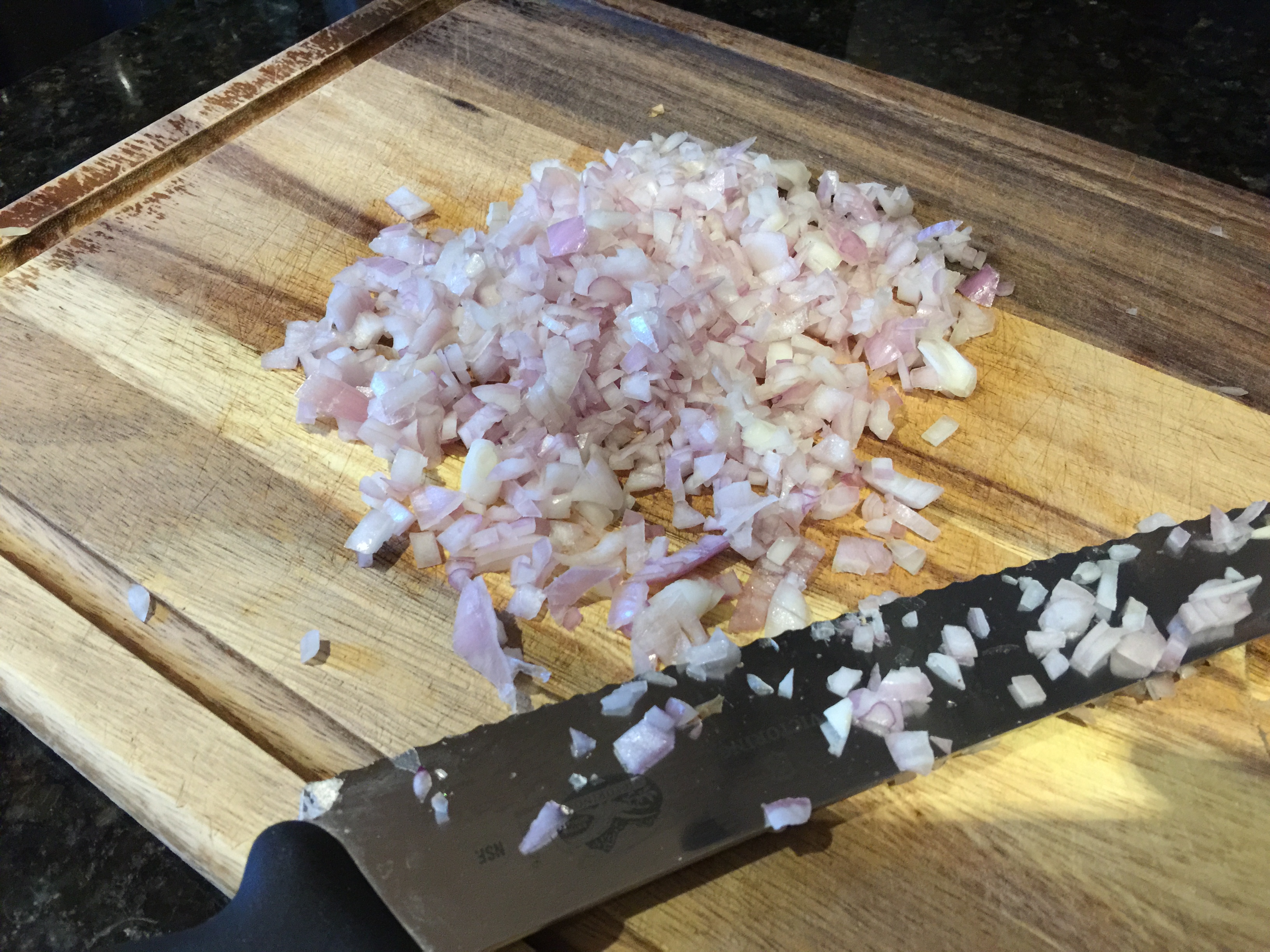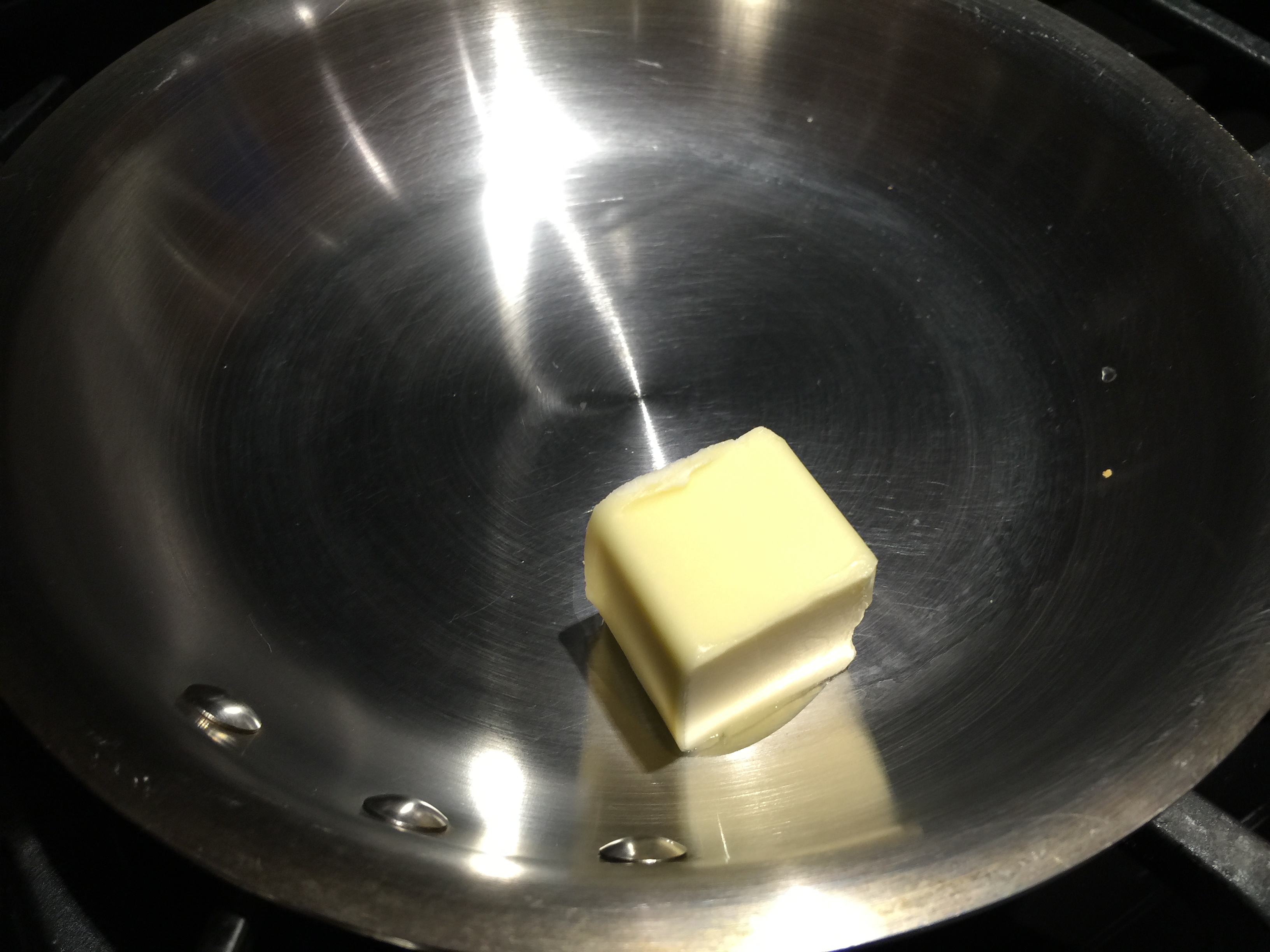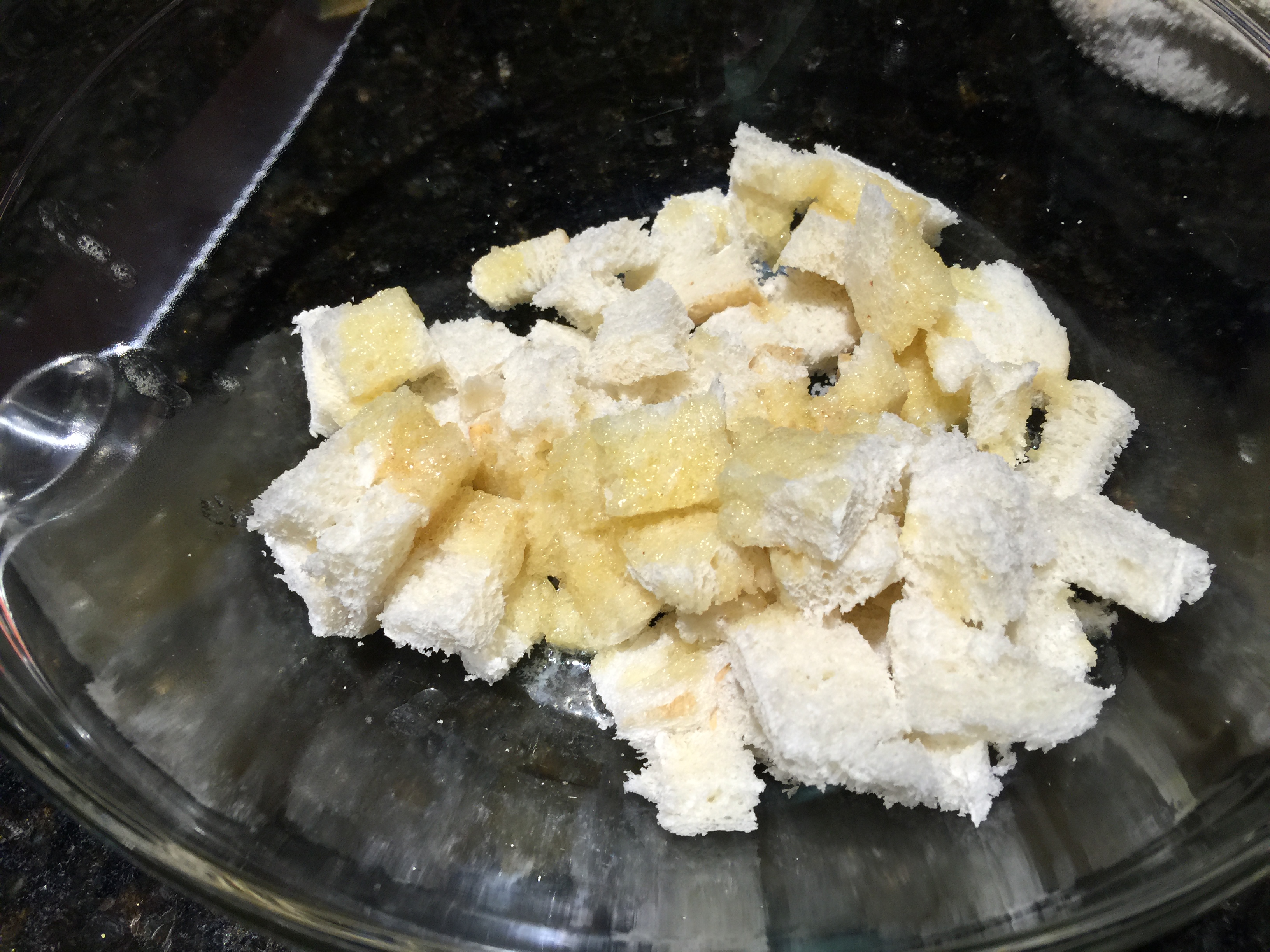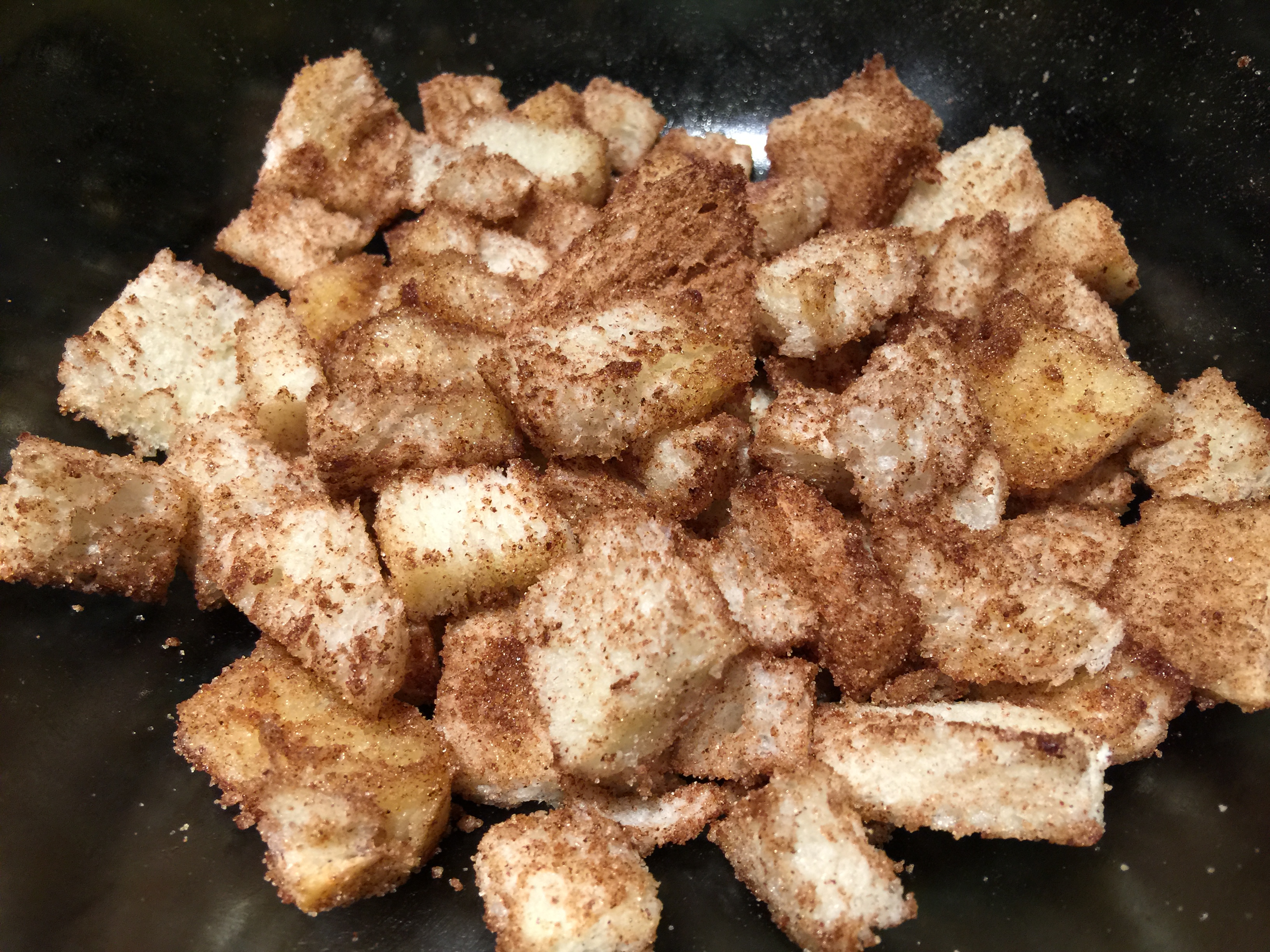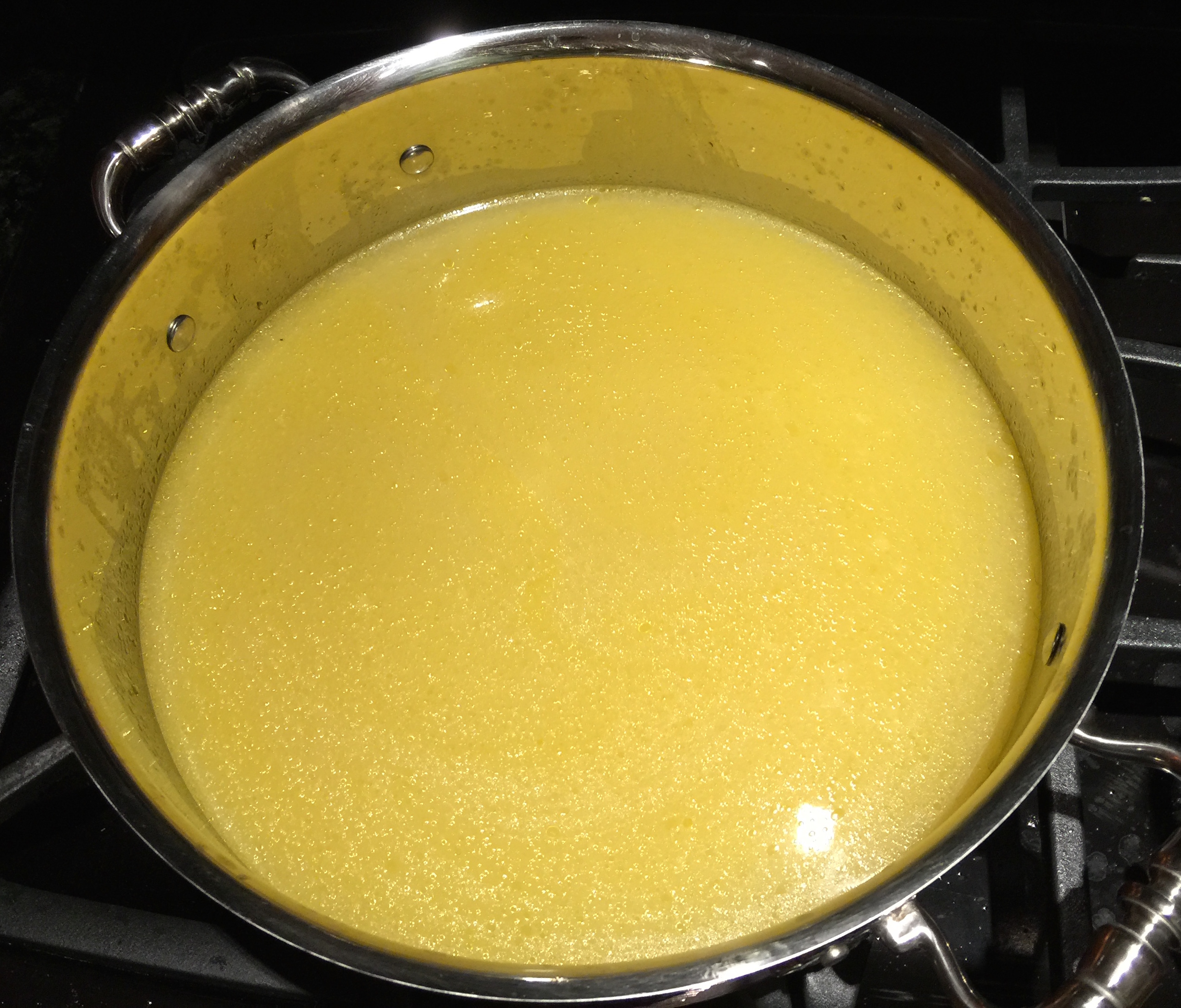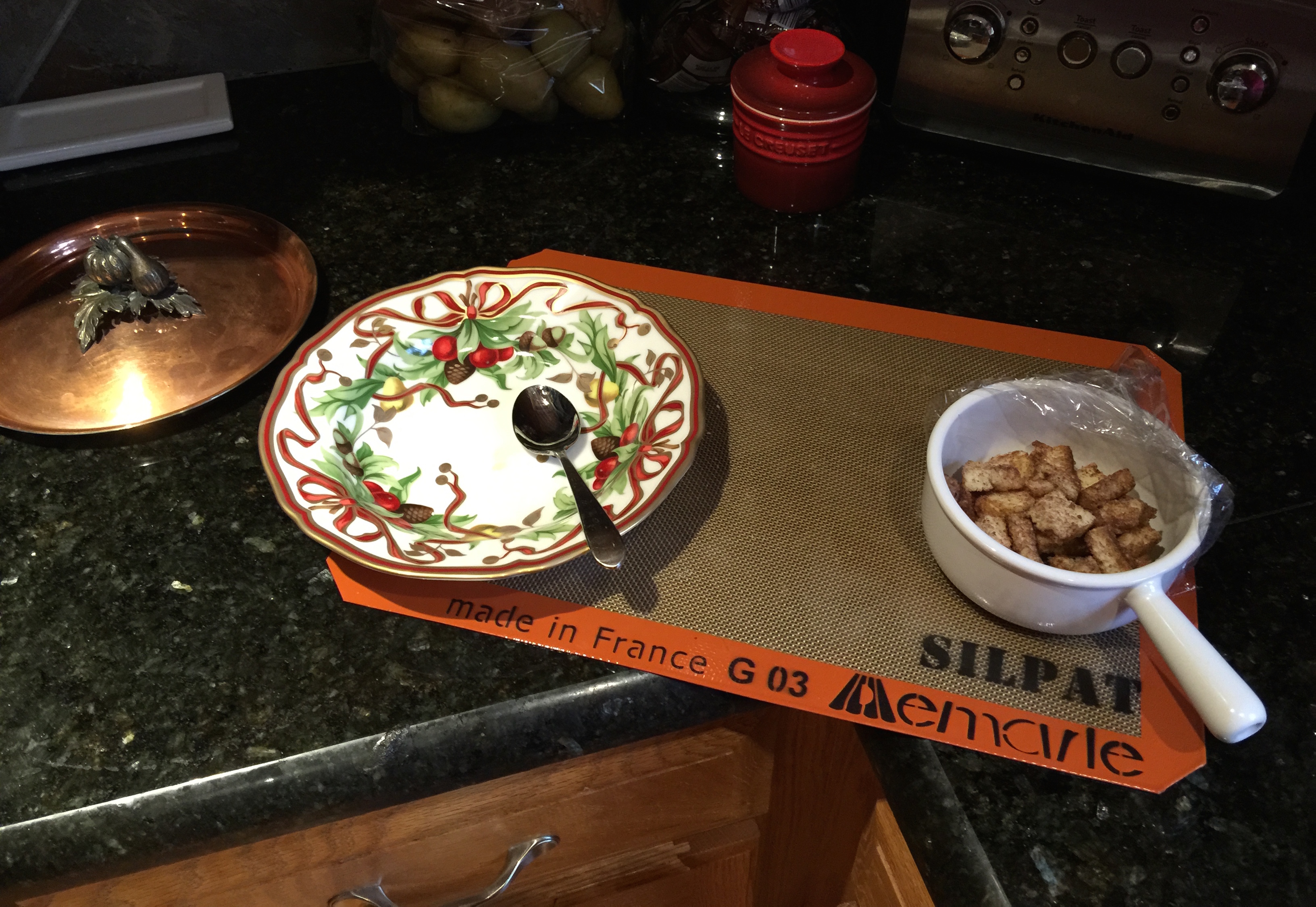Butternut Squash Soup with Cinnamon Sugar Croutons
When we were down in Florida, our friend, Karen, had some butternut squash puree in the refrigerator the chef, Sebastian, had left for her and Blake as he didn’t need it. She used it to make herself a butternut squash soup for lunch one day after coming back from a run. I hadn’t thought much about it but during one of the recent trips to the grocery store, we passed the butternut squashes and I put one in the cart on a whim because it’s one of the few mainstream vegetables we’ve never used. I thought it might be fun to try our hand at it. It’s been on the counter for a week or two, waiting to be used. (You might have noticed it behind the Crown Maple syrup when I wrote about our taste tests of the different intensities of real maple syrup.)
Butternut squash is interesting because it’s technically a fruit, not a vegetable. In many parts of the English speaking world, it’s considered a type of pumpkin, not a squash, and is definitely related in flavor. It contains a ton of different nutrition sources and vitamins, stores well for long periods (in a cool, dark place, it should keep for up to a month), and is relatively inexpensive. According to the USDA, a single 100 gram serving of butternut squash contains only 45 calories and gives you 67% of your daily Vitamin A, 39% of your daily beta-carotene, 25% of your daily Vitamin C, 10% of your daily Vitamin E, 10% of your daily Magnesium, 10% of your daily Manganese, 5% of your daily Calcium, 5% of your daily iron, 7% of your daily potassium, and 9% of your daily Thiamine, among others, as well as provides 1 gram of protein and 2 grams of dietary fiber.
Last night, I decided it was time to give it a go.
Instead of developing a recipe from scratch, I wanted to use one of the best recipe sources I know as a sort of baseline to get me familiar with the flavor profile since this isn’t something we had in my parents’ house during childhood: America’s Test Kitchen. You can find the recipe I’m using in this post here. If you aren’t a subscriber (it’s seriously a few bucks a month so you can afford it with the change in your pocket most likely), consider becoming one because they approach cooking like a science. They test, rate, test, rate, test, rate, and test dishes, preparation methods, appliances, and tools until they come up with the finalized recipe that is a combination of best flavor and easiest preparation. They do all of the work, spend all of the money, and for a tiny outlay you get to collect the dividend. I highly, unreservedly, and enthusiastically recommend them.
If you need to see it for yourself to understand why their recipes end up being so top-shelf, go look at their Tumblr page, which will probably make your inner scientist or chef excited. Look at this woman testing Dutch cocoas. It’s such a cool sight. Once again, they didn’t let me down. Their recommendation for butternut squash soup turned out to be as excellent as everything else they produce. Here’s a picture journey so you can experience it alongside us.
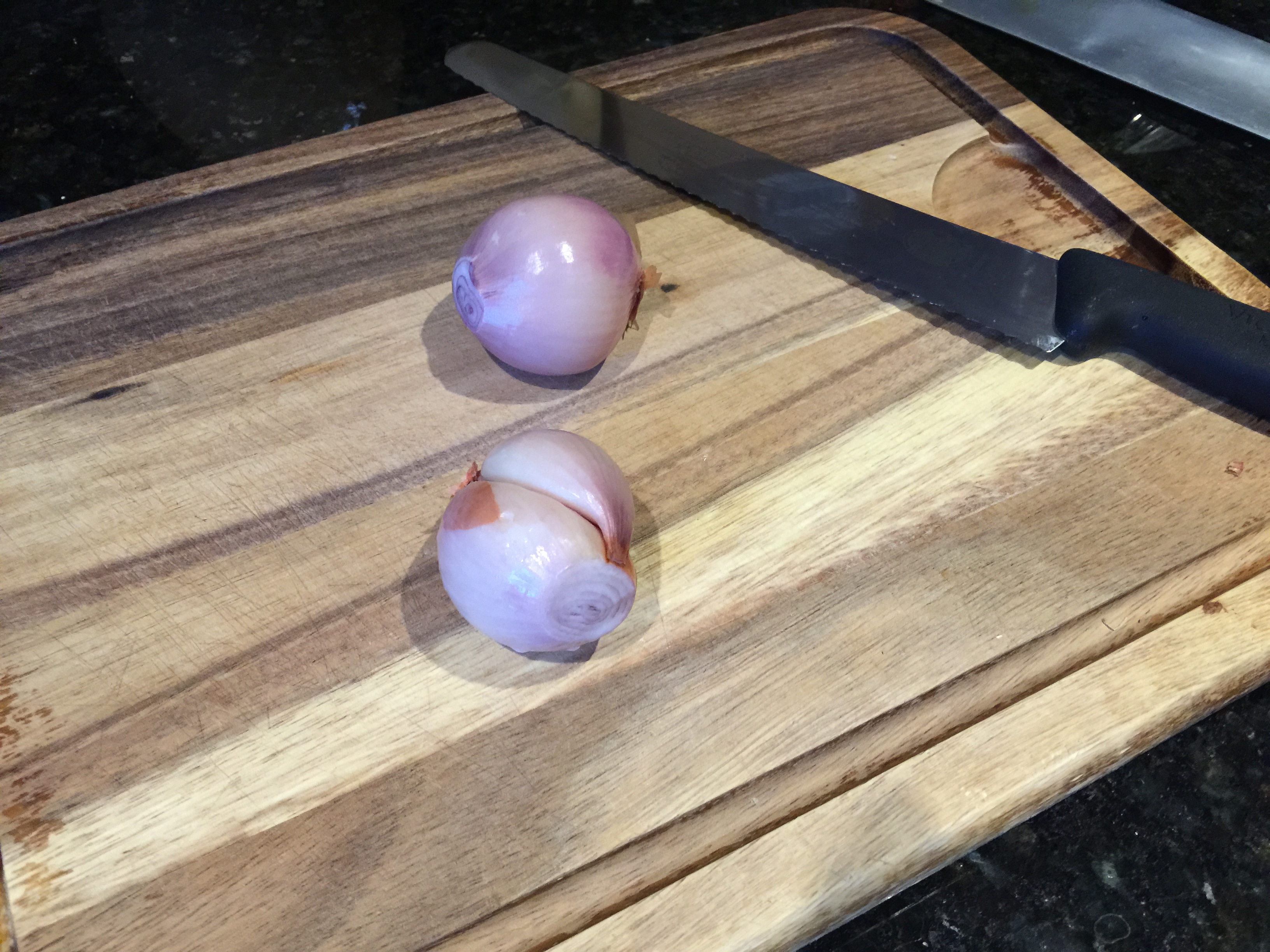
Take two medium shallots … [Side note: Aaron and I have been looking for a new cutting board for the past year because, as you can tell, our existing cutting board is about to give up the ghost. We want one that is at least 36 inches across and 24 inches wide, dark walnut color, no juice grooves, a flat edge (not rounded downward). The size is bigger than normal because we want to be able to use it for huge family dinners when we are cooking for a lot of people. We haven’t been able to find it, yet. If any of you know a vendor who has one for sale, let us know if you don’t mind. Alright. Back to the butternut squash soup.]
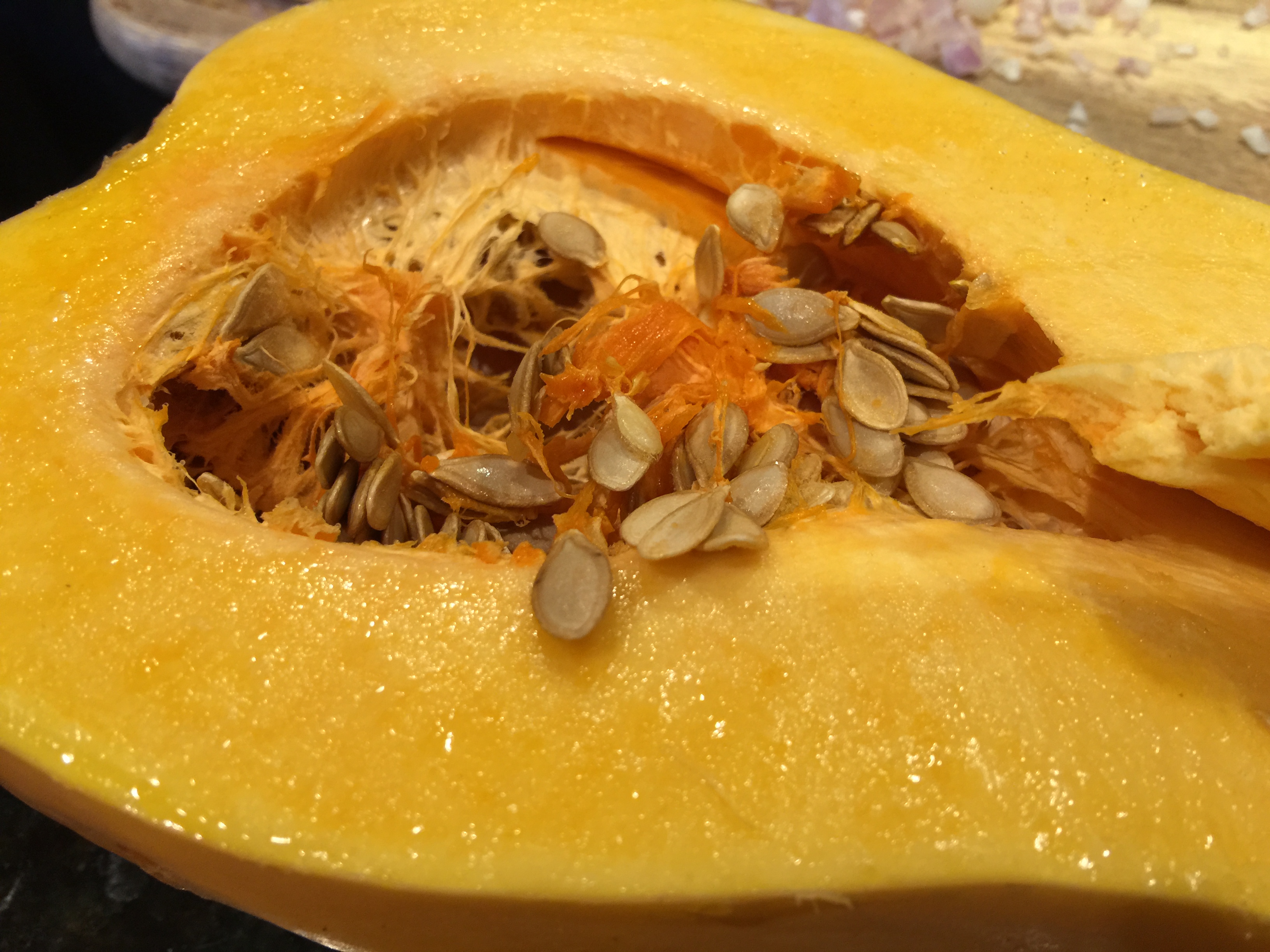
Take a butternut squash and cut it open lengthwise. Be careful and don’t hurt yourself because if you do it wrong, you can get seriously injured.
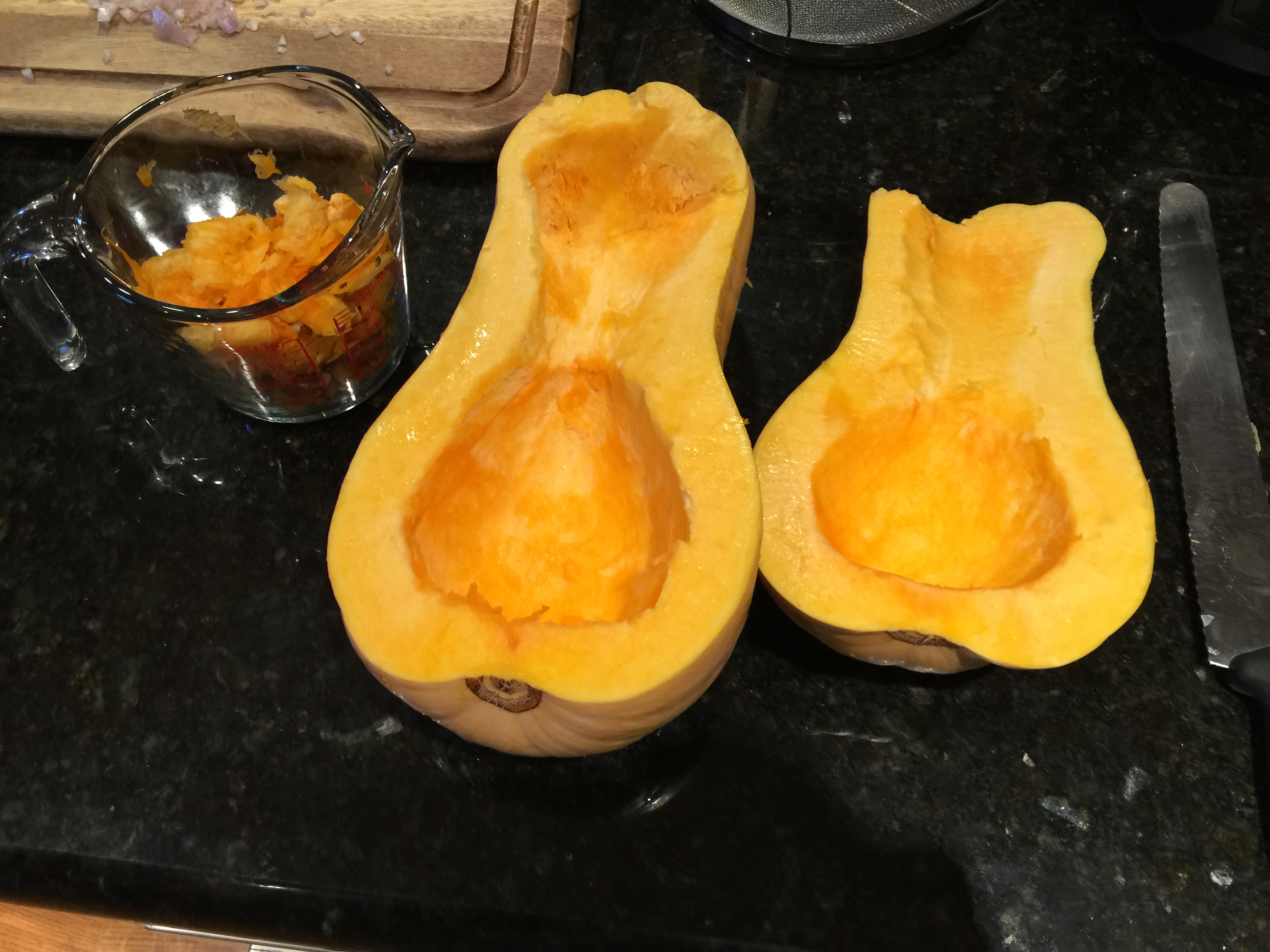
Scoop out the seeds and fibers of the butternut squash into a separate cup or bowl. You’ll need them in a moment.
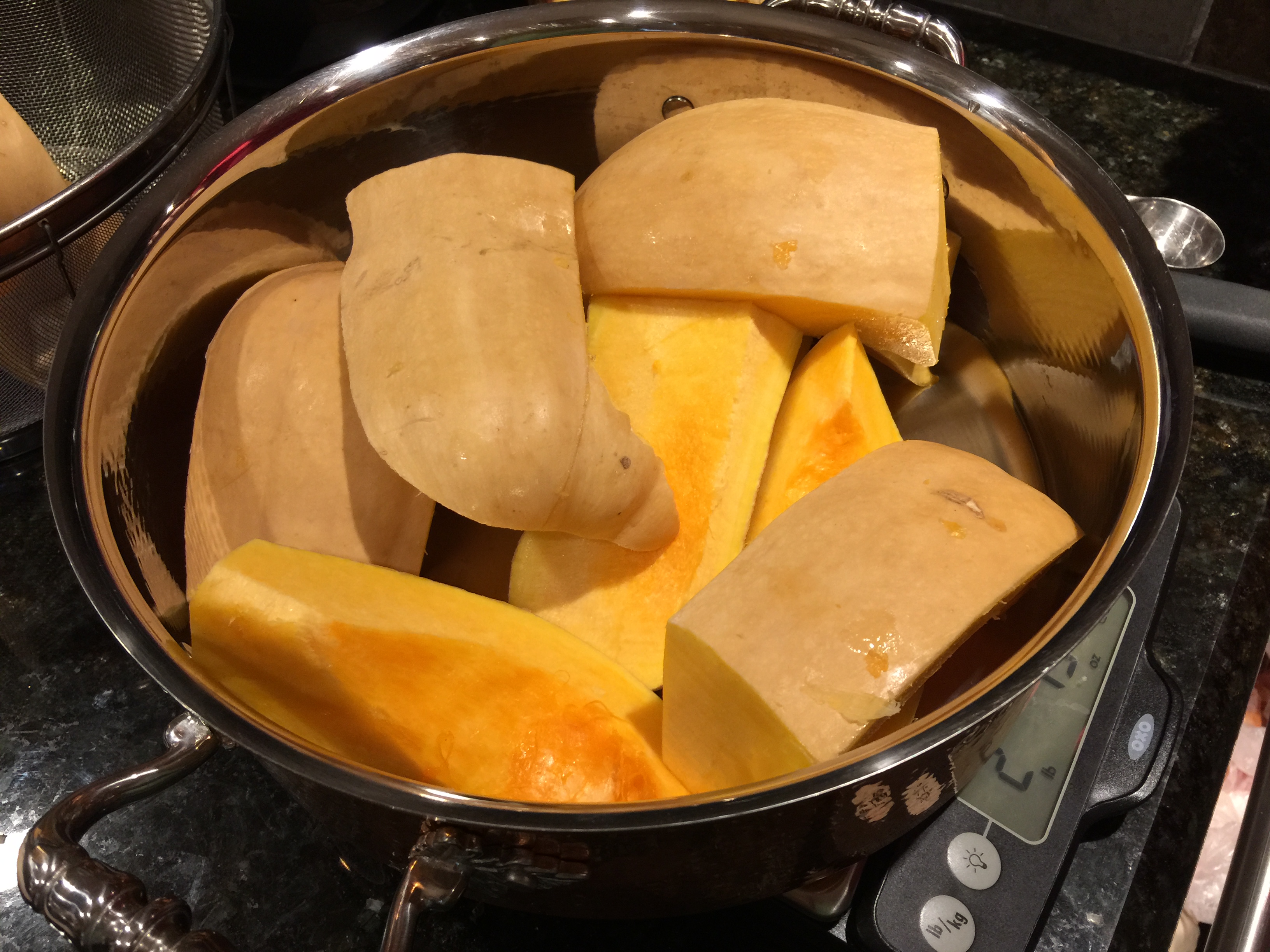
Cut the butternut squash itself into smaller pieces, then weigh out roughly 3 pounds of the vegetable (or more, if you want more flavor).
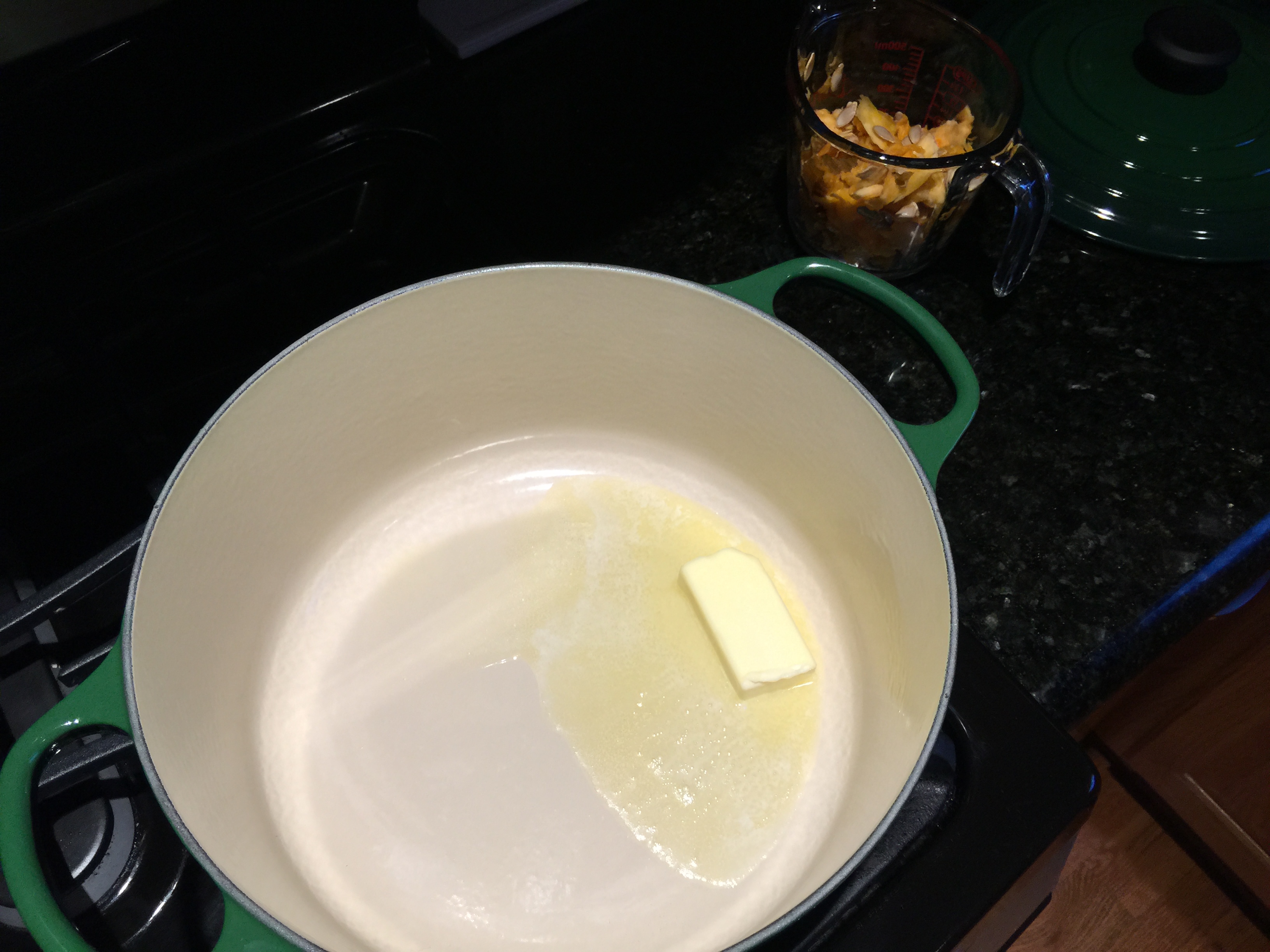
Using a dutch oven or large pan with lid, melt 4 tablespoons of butter over medium-low heat until it foams.
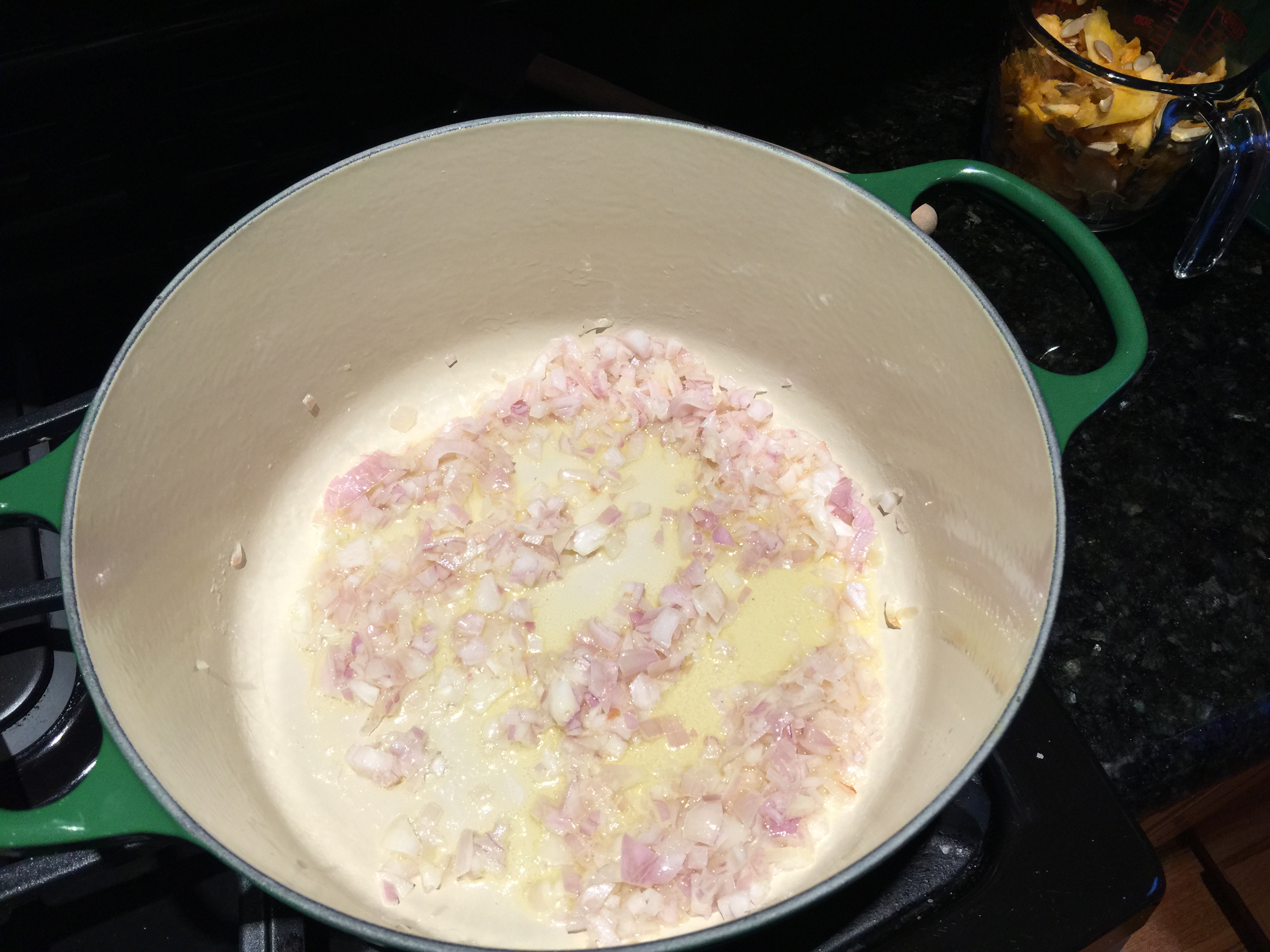
Throw in the diced shallots you prepared, stirring them for roughly 3 minutes as they cook. You want them to largely lose their color and become clear but not turn brown.
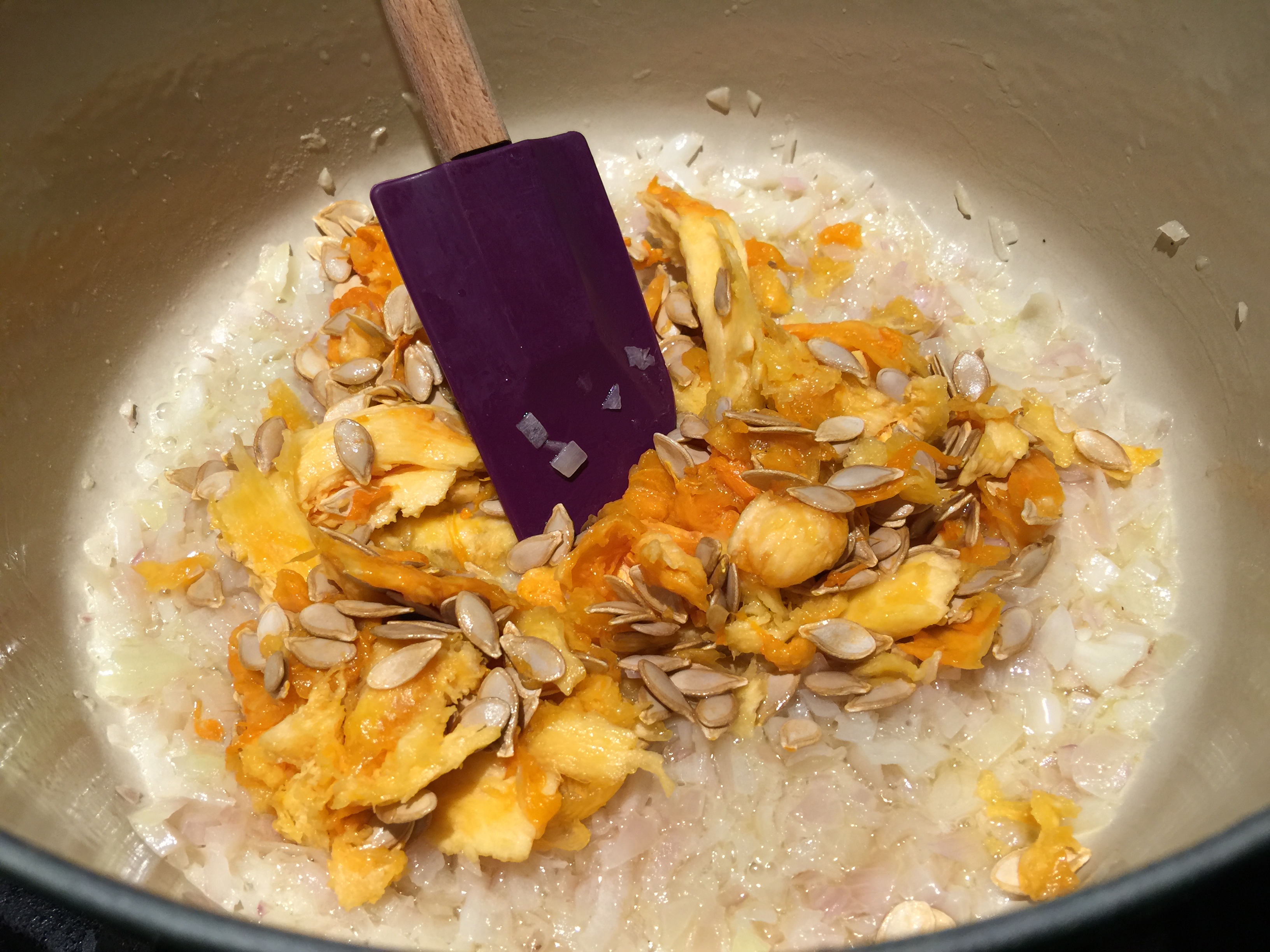
Add the butternut squash seeds and fibers you have set aside. tir occasionally until, in the words of the original recipe, it becomes “fragrant and butter turns saffron color”, which will take about 4 minutes.
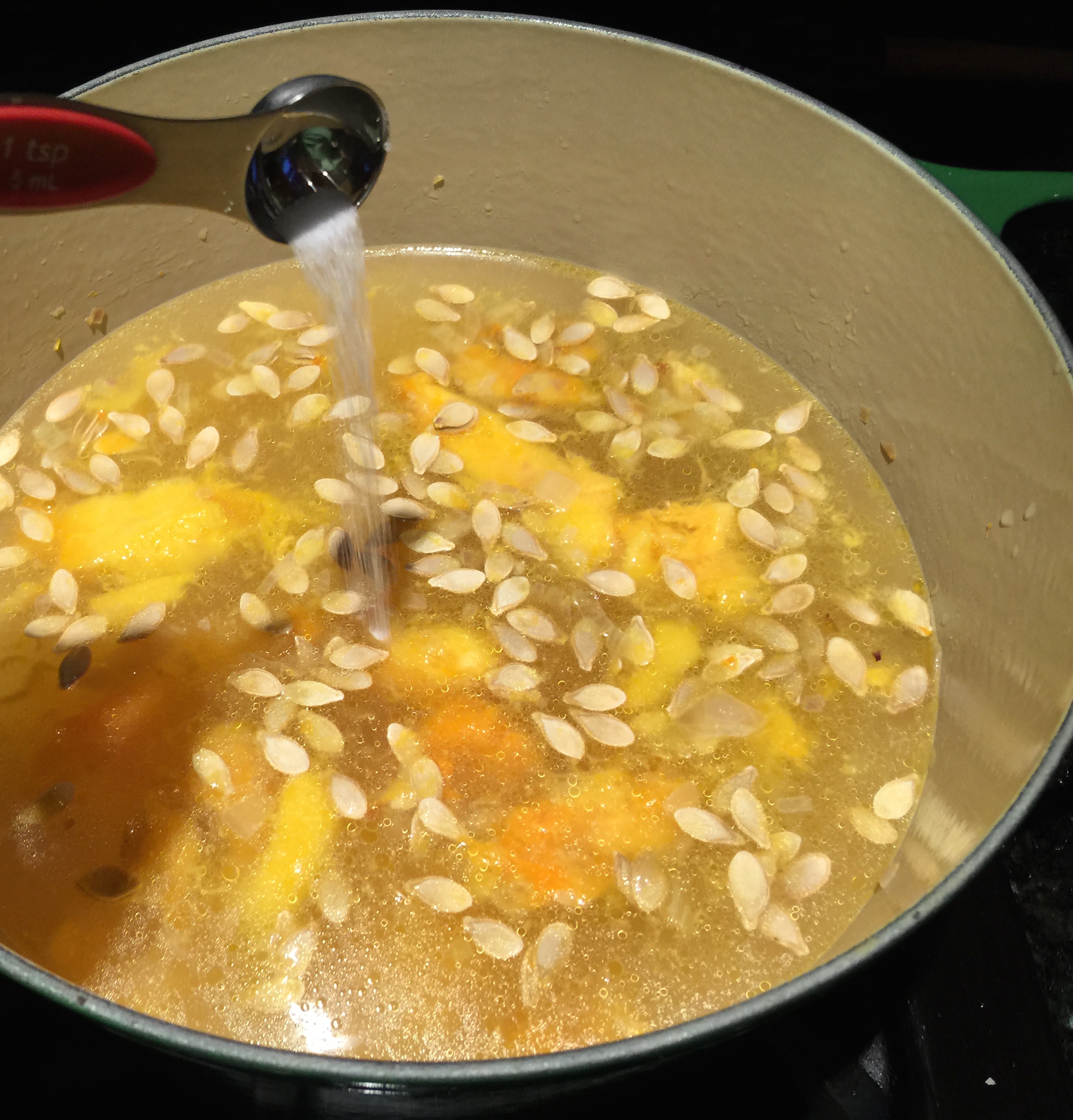
When that is done, add six cups of water and 1.5 tablespoons of salt. Crank up the heat to high and bring it to a boil. This is going to be your soup base.

Once that soup base is boiling, using a strainer or steaming basket, put the butternut squash (soft side down) over the steam, not actually touching the liquid.
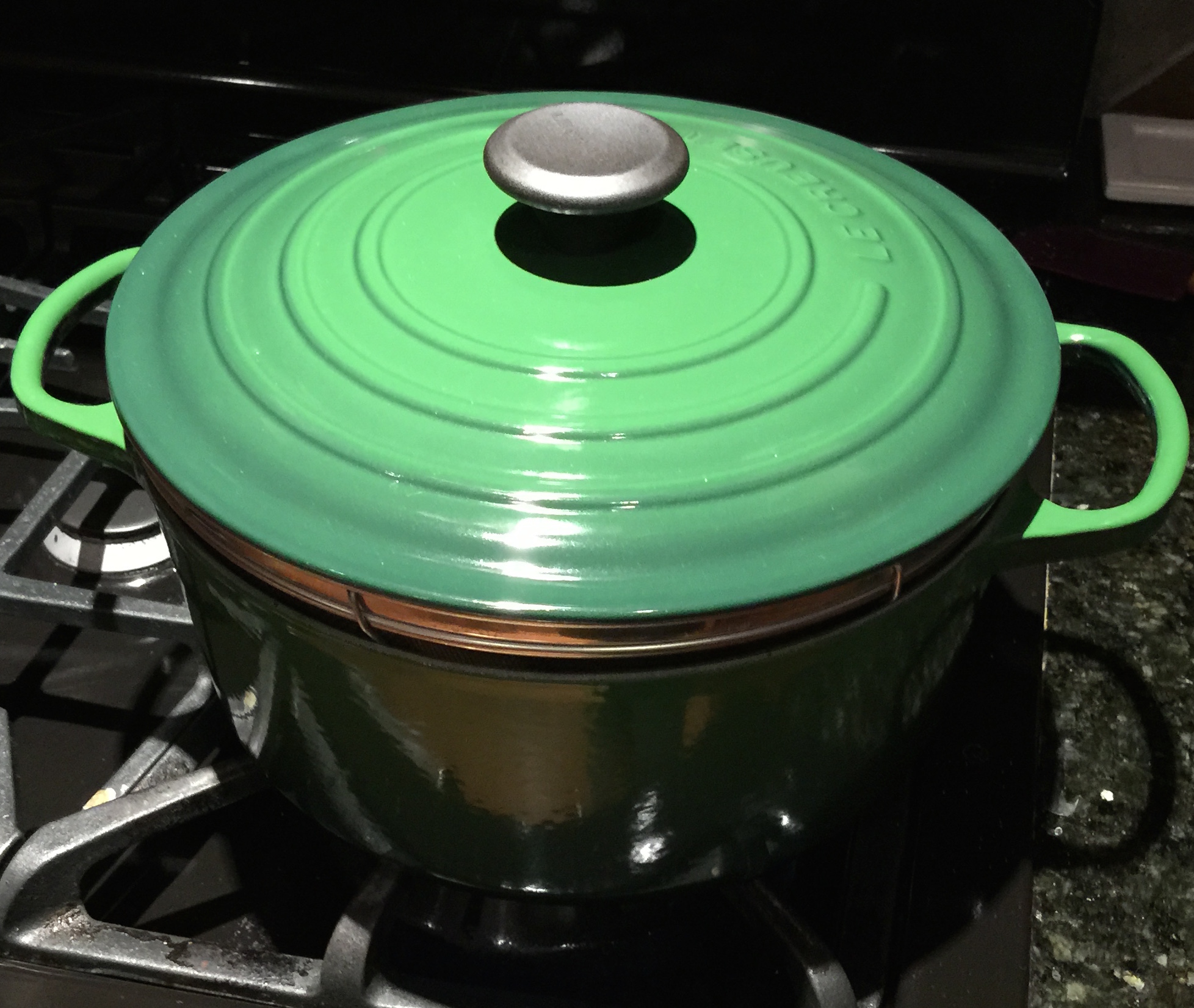
Reduce heat to medium-low and put a lid on it. Let the steam cook the squash until it is soft, which will take around 30 minutes, while simultaneously concentrating the soup base, which is being boiled away.
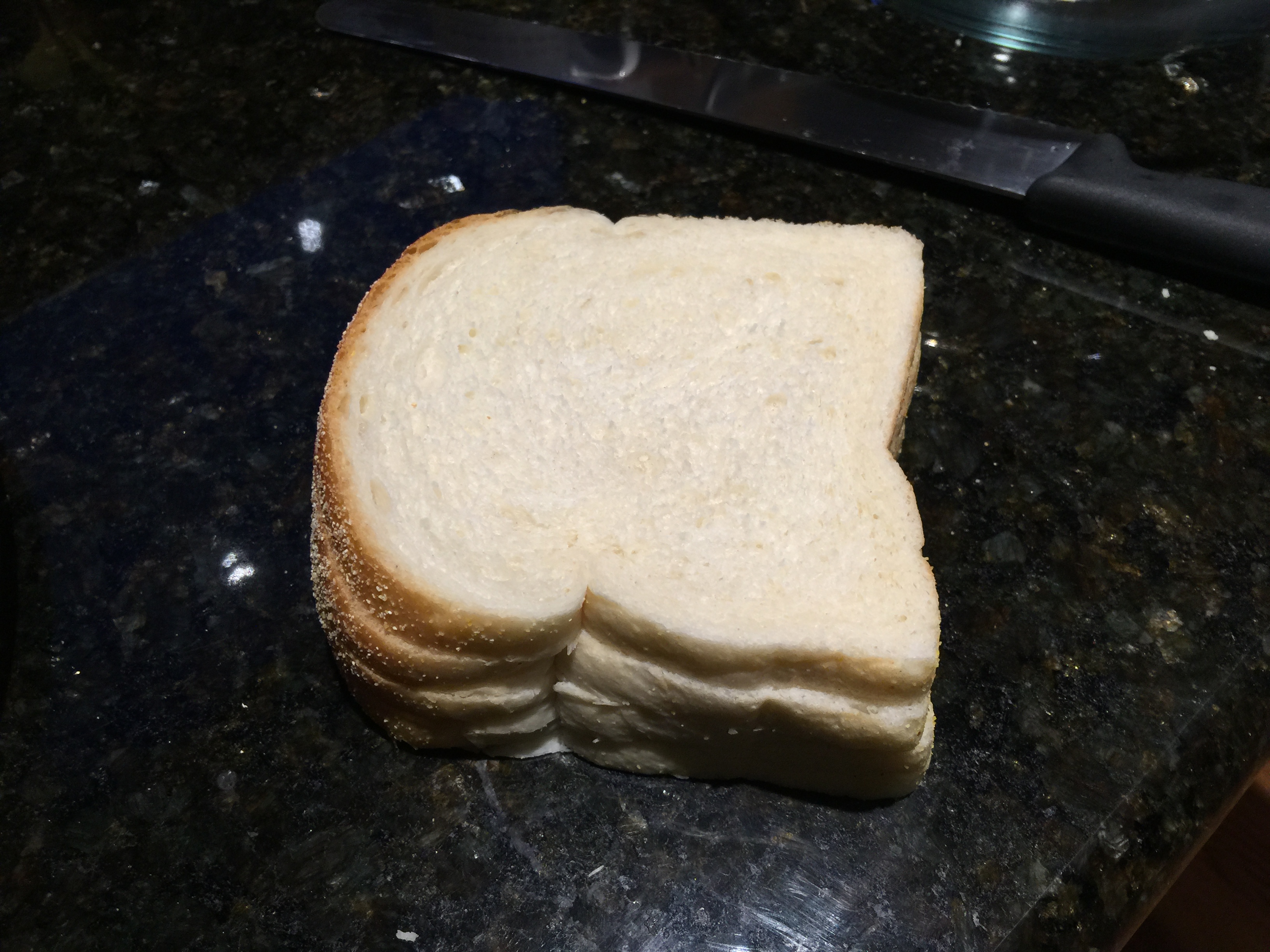
While the butternut squash is being steamed and the soup base concentrated, break out four pieces of sturdier white bread. We used English muffin bread.
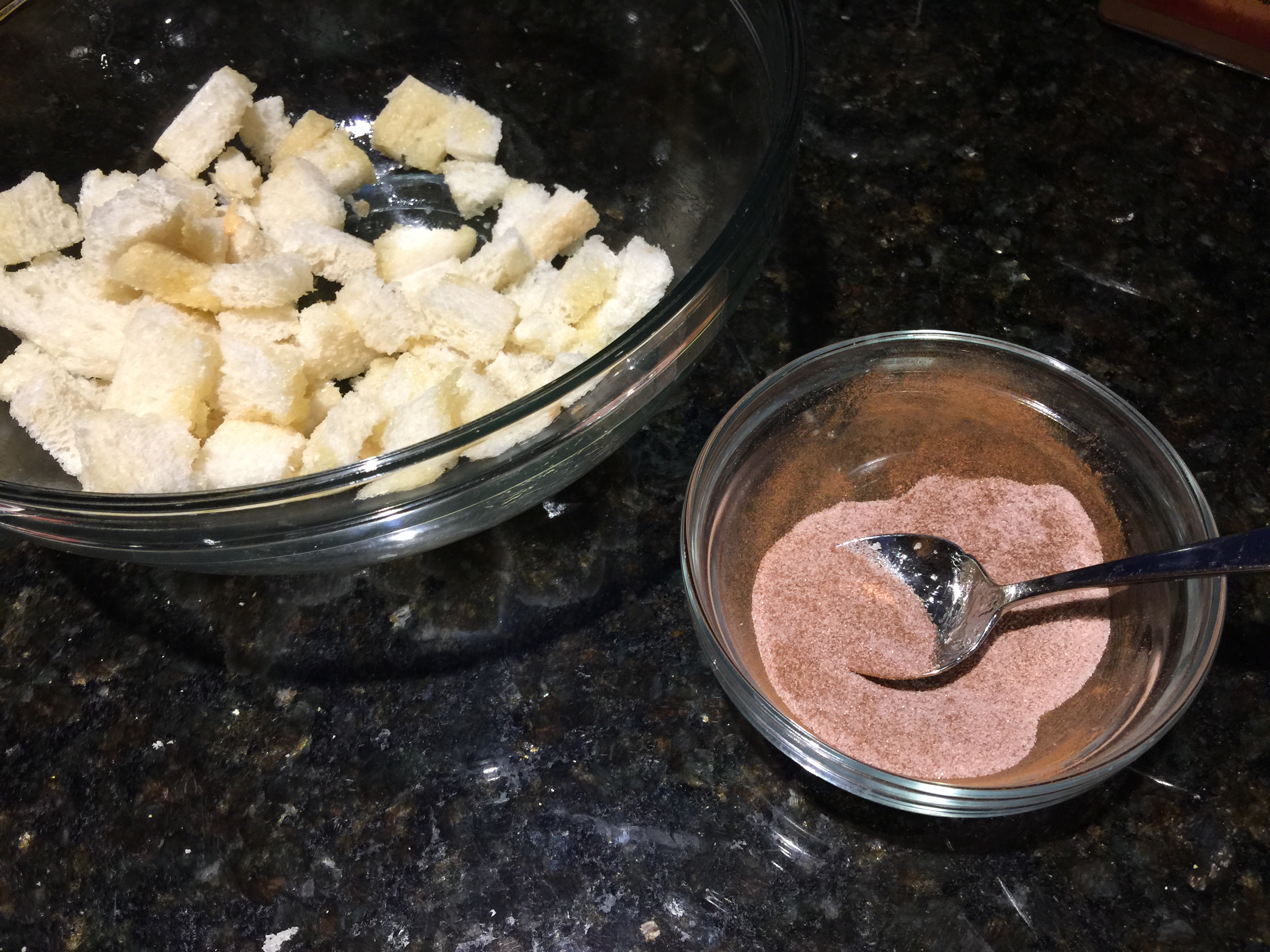
Mix 4 teaspoons of white sugar and 1 teaspoon of ground cinnamon to sprinkle over the buttered bread.
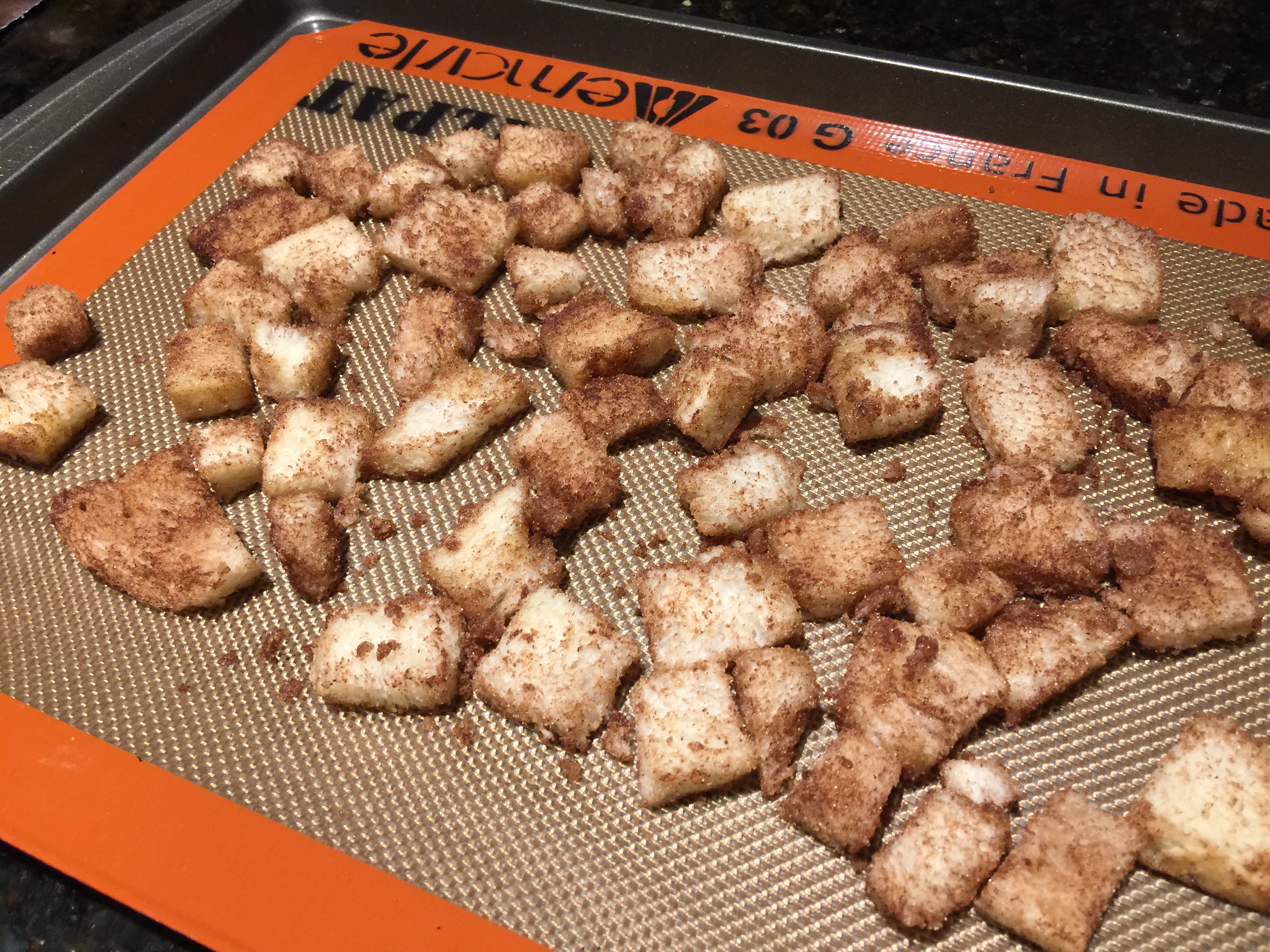
Spread the cinnamon sugar croutons out on a baking sheet and bake for 8-10 minutes in an oven preheated at 350 degrees Fahrenheit. When they are done, put them in a container. You will be sprinkling them on top of the butternut squash soup right before serving every time a dish is portioned out to someone.
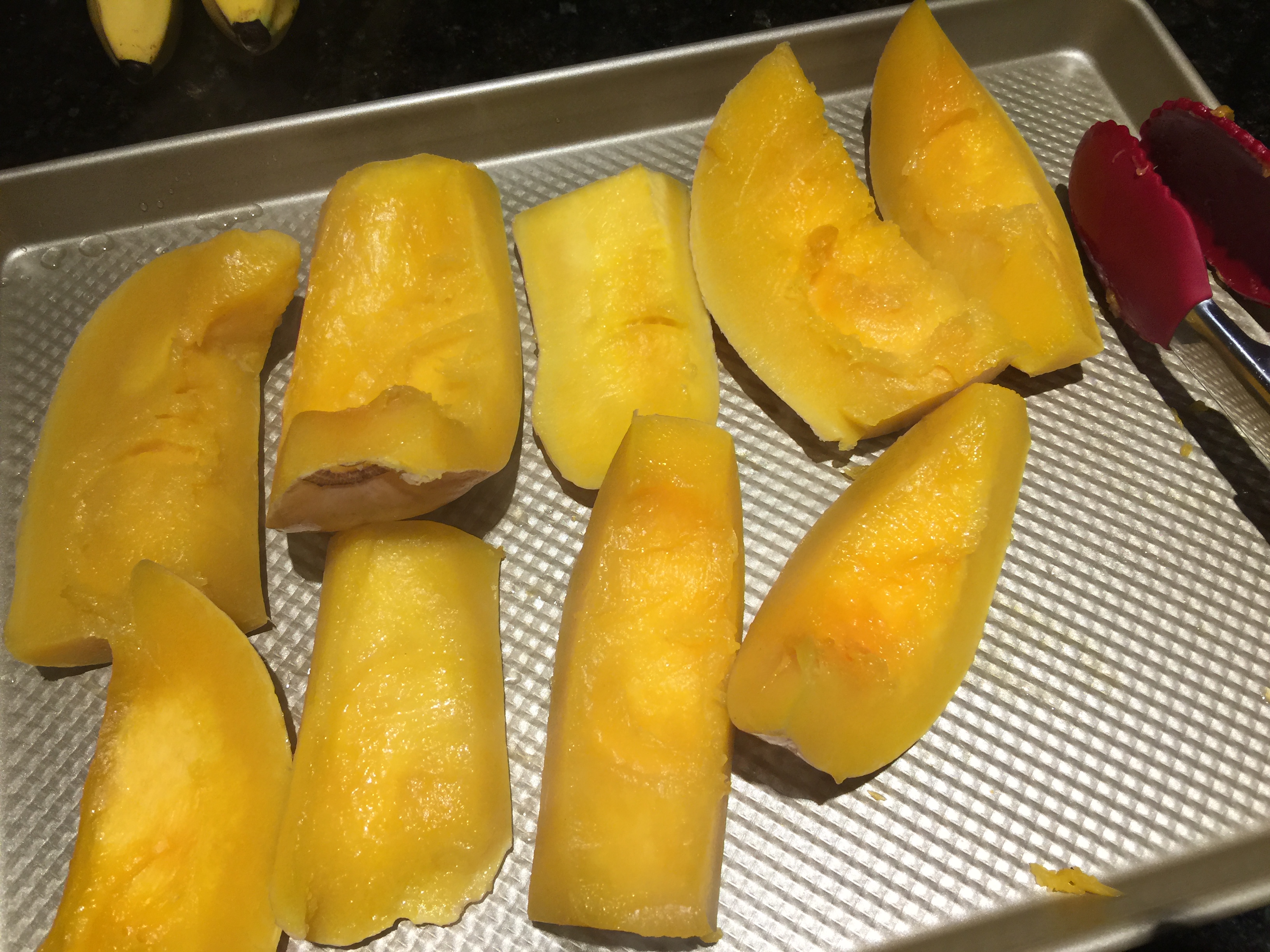
Once your butternut squash is steamed, use tongs to move the pieces from the steaming basket to a baking sheet. Let them cool enough that you won’t burn yourself when handling them.

Using a spoon, scrape out as much of the vegetable as you can without getting into the rind. You’re going to throw the rind away and put the butternut squash scrapings into a separate bowl.
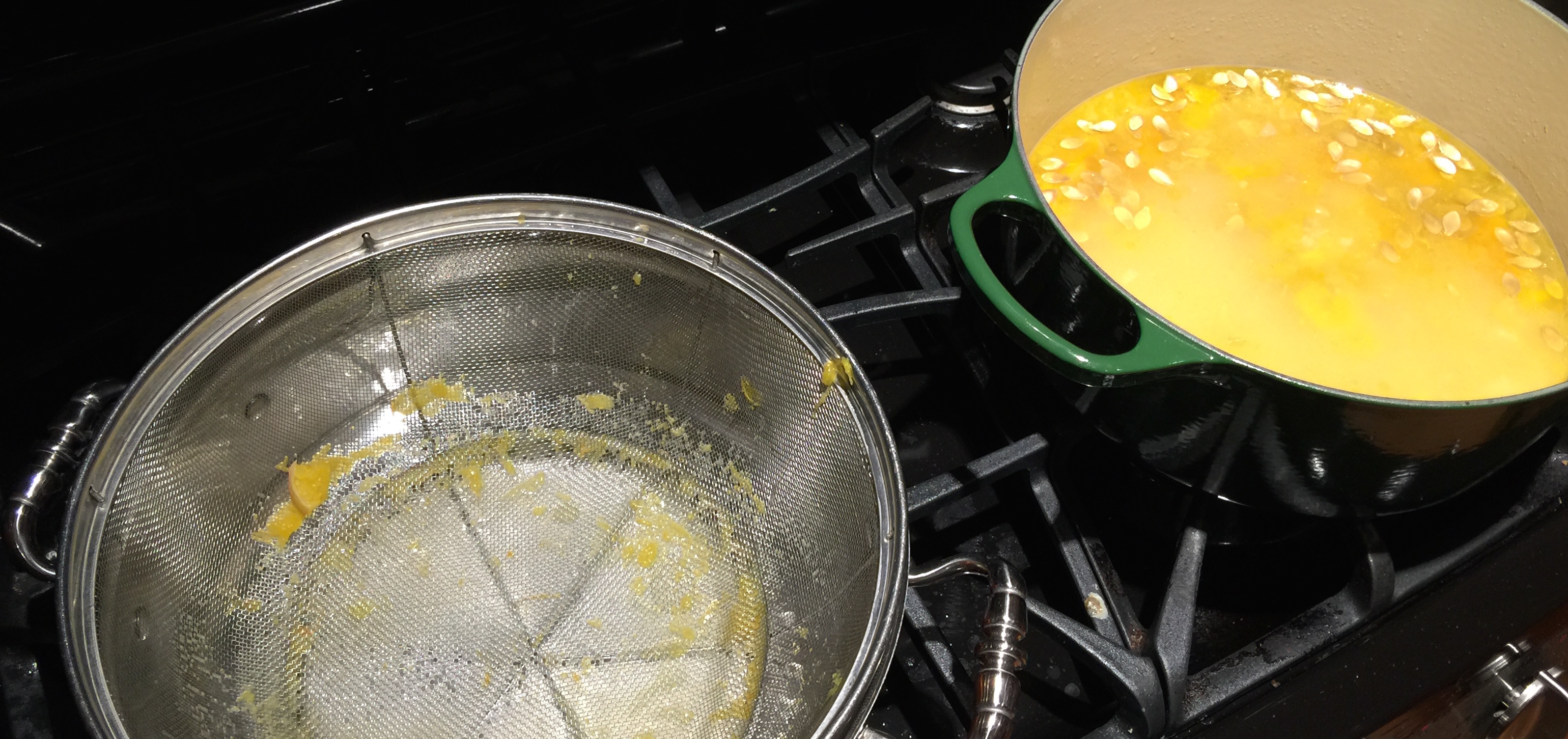
Back at the stove, you need to use your strainer to remove any solids from the soup base, which has reduced from all of the boiling.
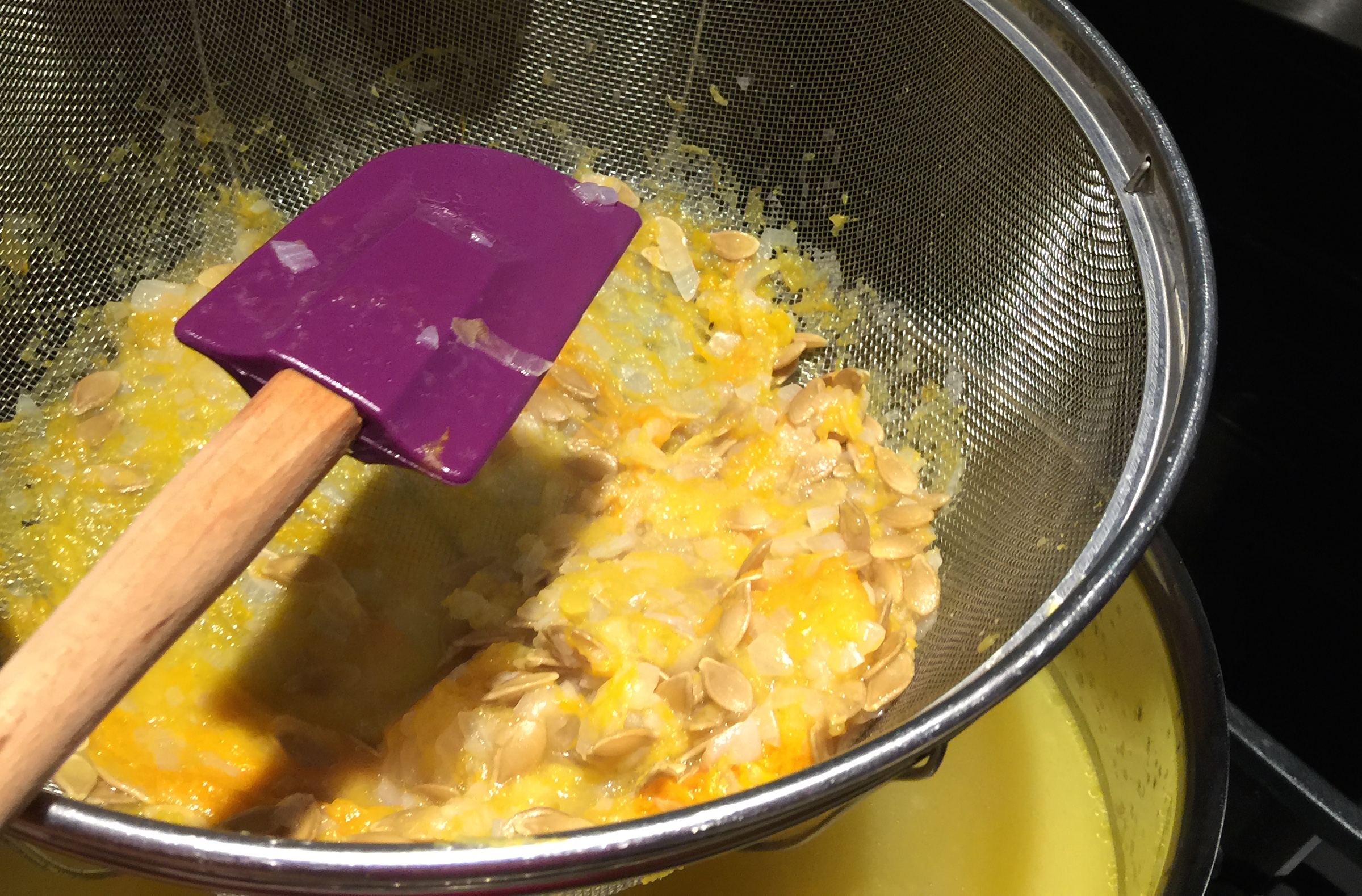
Press down on the solids for good measure to remove any liquid … You can discard them when you are done.
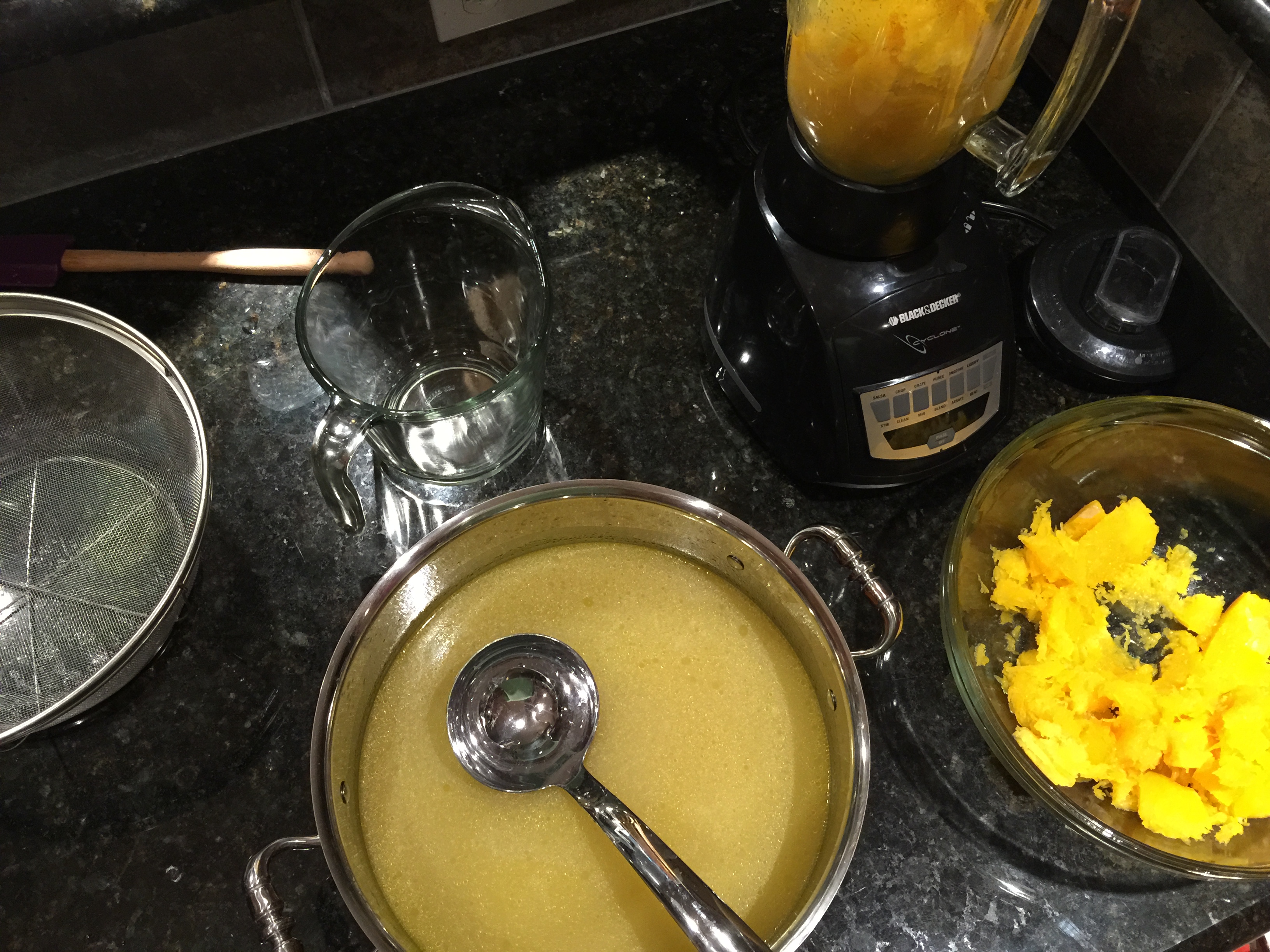
Take your butternut squash soup base and the butternut squash scrapings and put them next to a blender or food processor. I normally use a MagiMix food processor, which I love and was a wedding gift from my brother, but Aaron was cooking an Asian stir-fry from scratch at the same time I was starting this dish so I had to use a backup as he was making a pepper and vegetable mixture. Anything should work if it can produce a puree.
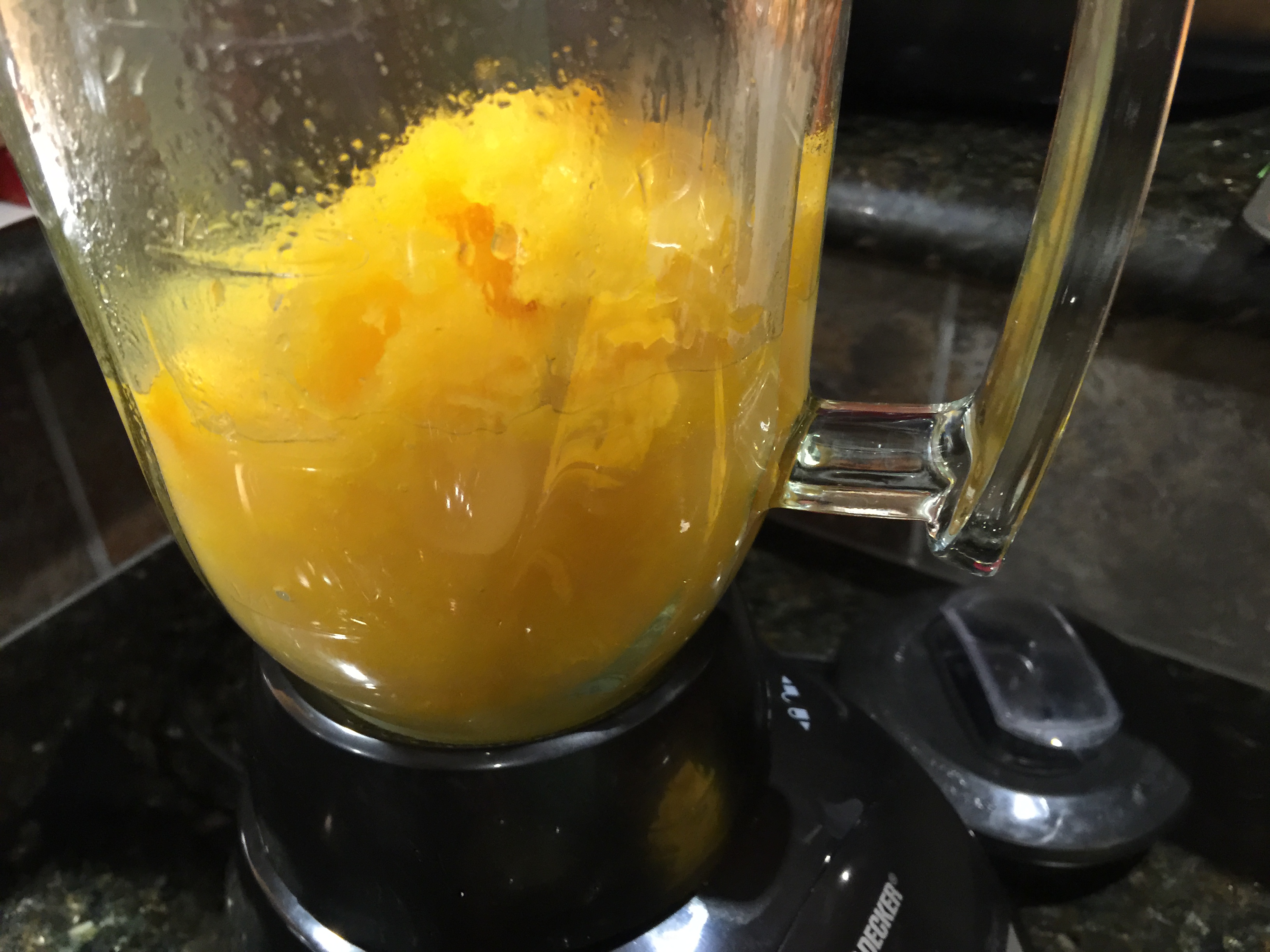
Dump in some butternut squash scrapings and ladle in some soup base liquid. Pulse. You want it to turn into a smooth puree.
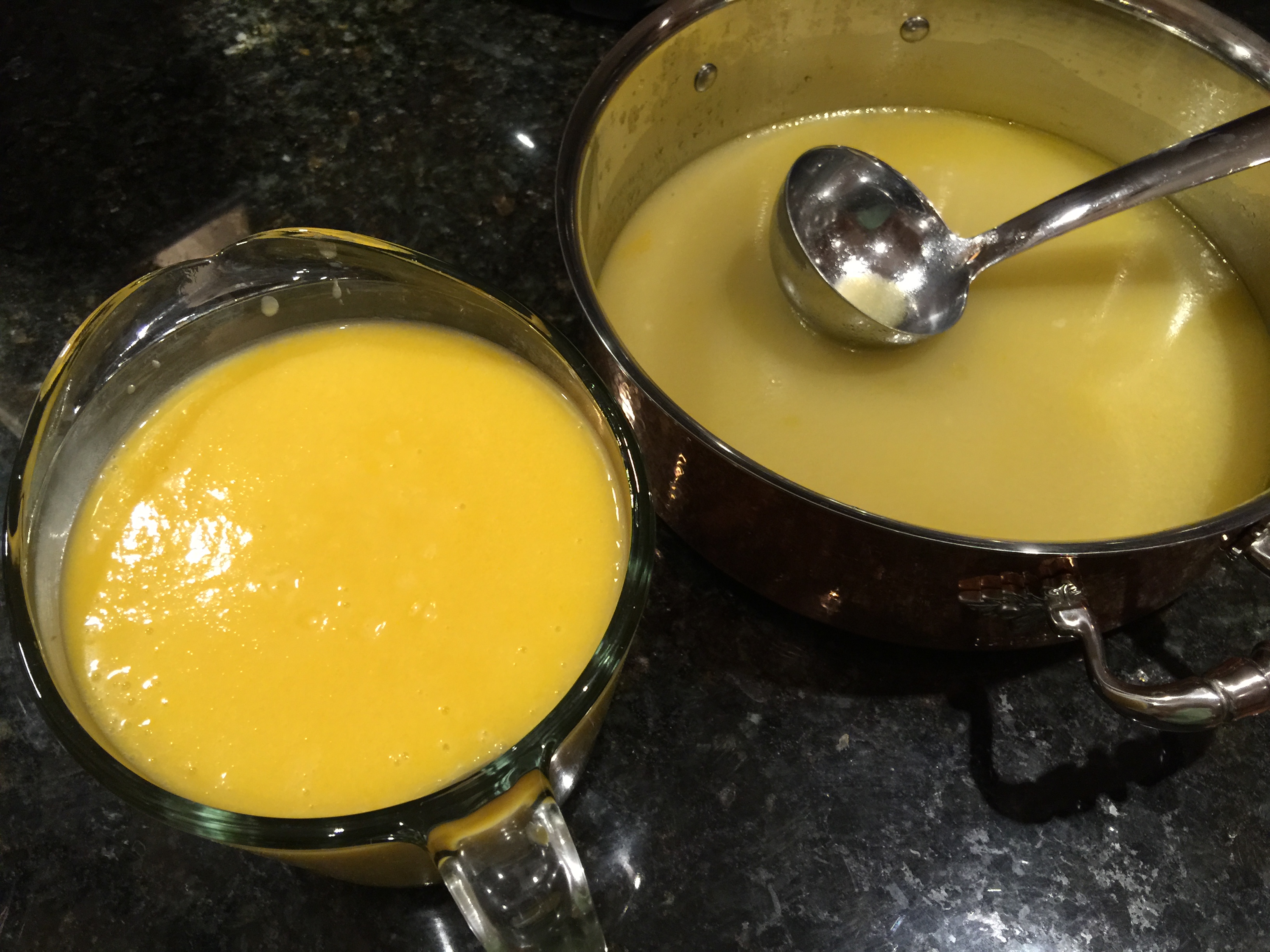
Pour the finished puree into a separate bowl or cup. Continue until all of the butternut squash scrapings are used, which should take 2-3 batches total in the blender if it’s a standard size and you are filling only 1/3rd to 1/2 way up each time for safety. Most of the soup base won’t be used, which is fine because …
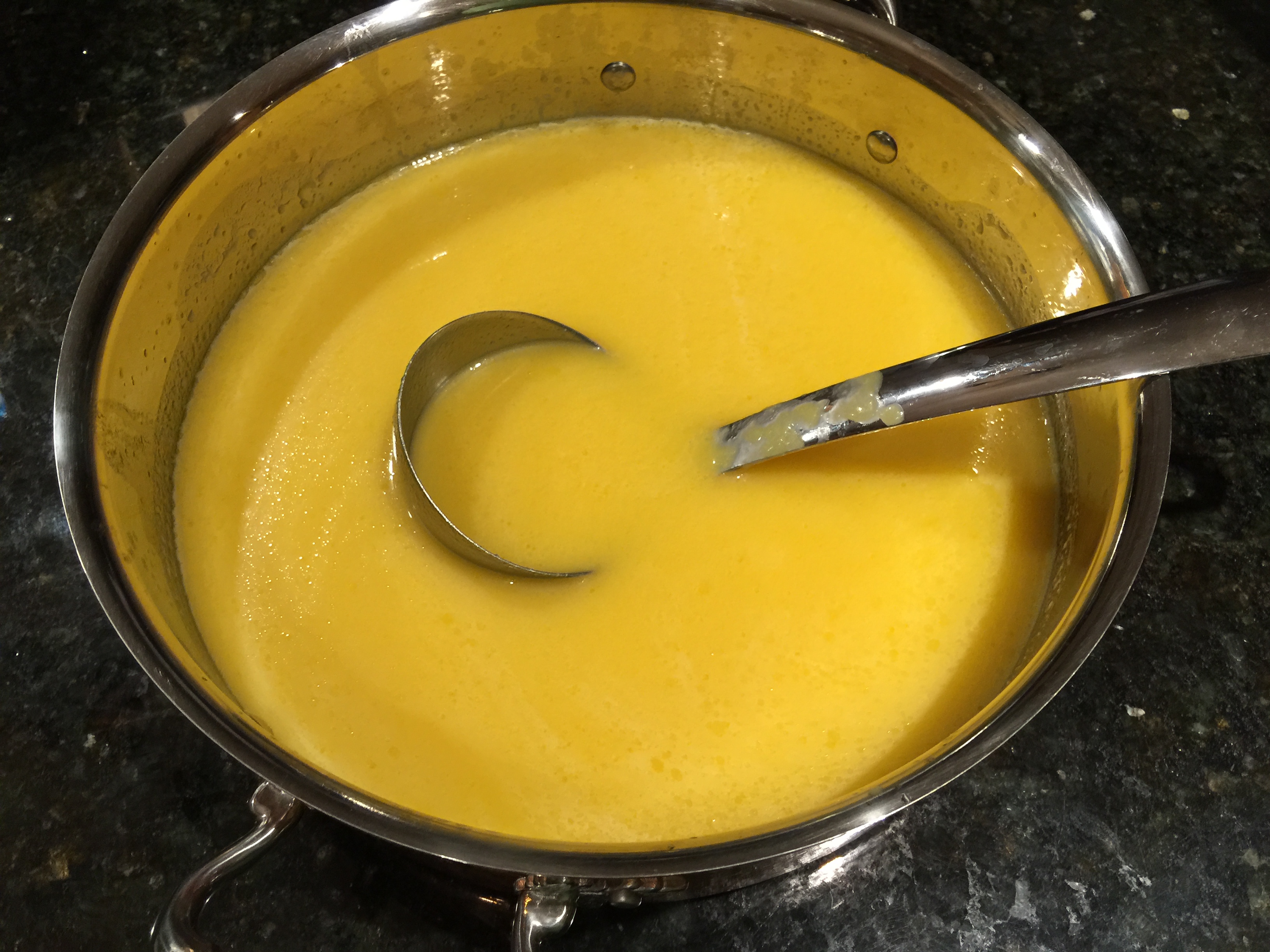
… you need to dump all of that pureed butternut squash mixture back into the soup base itself, stirring and mixing well so it all becomes a smooth consistency.
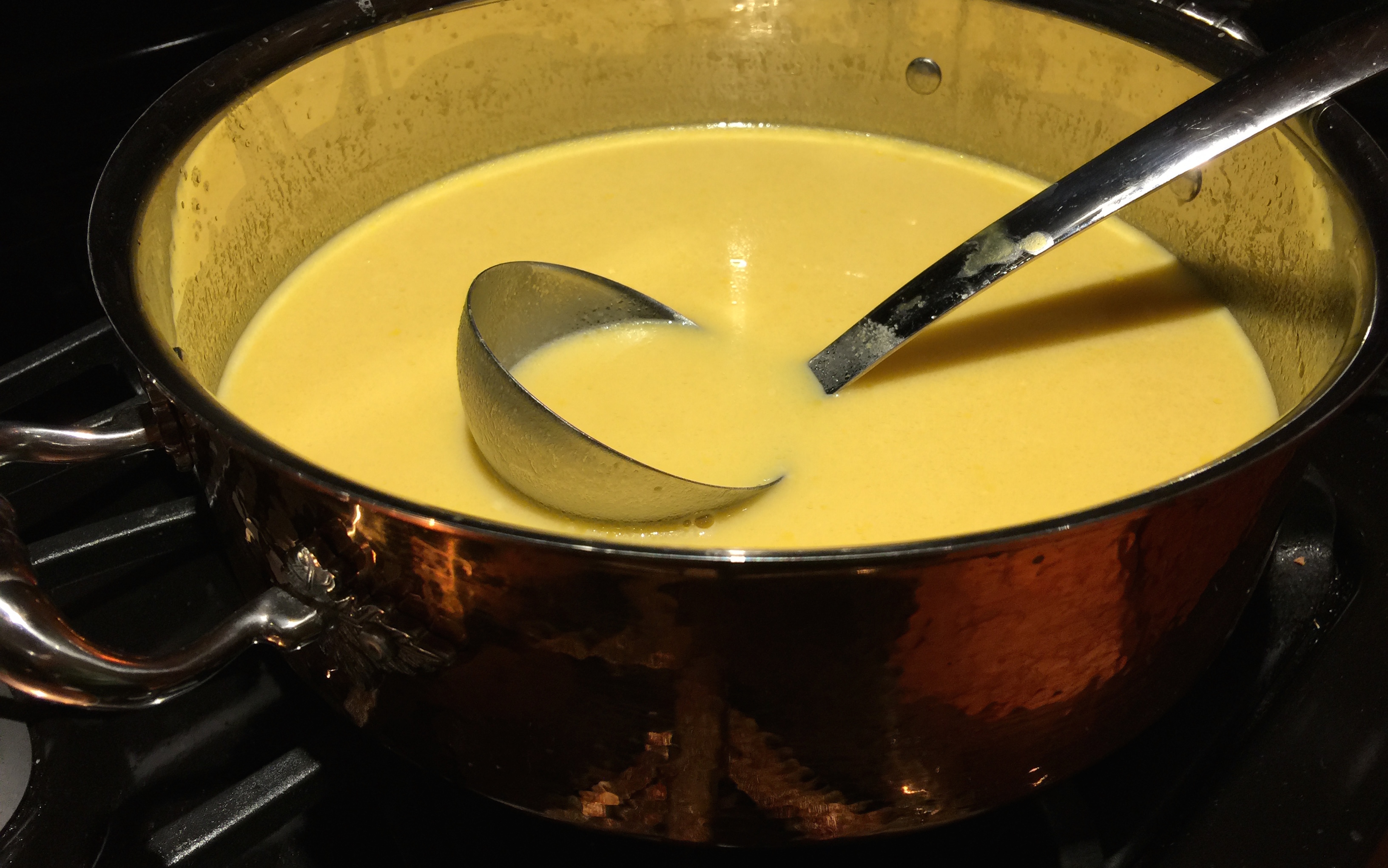
Put the entire thing back on the stove. Stir in 1/2 cup of heavy cream and 1 teaspoon dark brown sugar to sweeten and enrich the butternut squash soup.
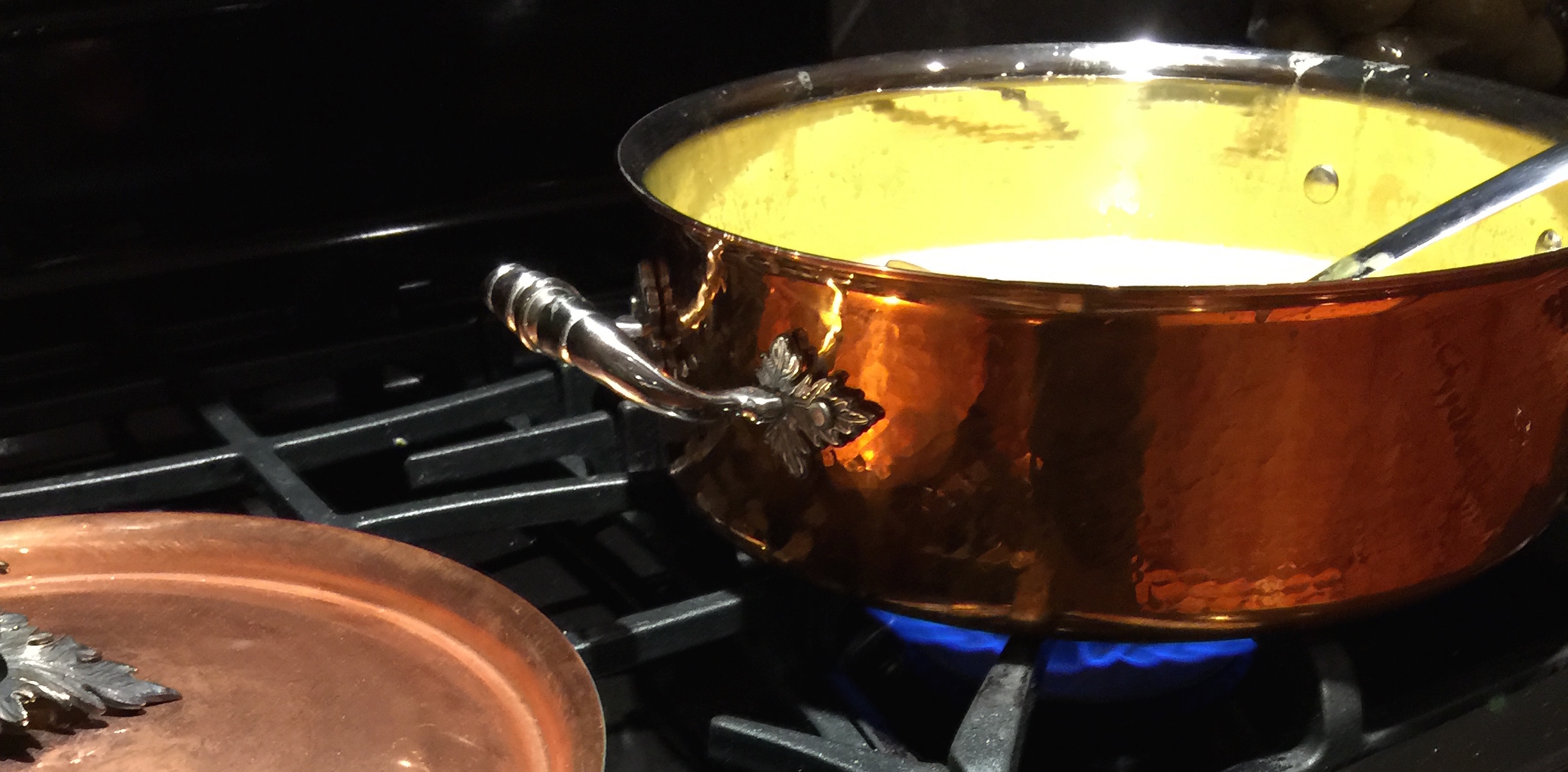
Turn the heat to medium-low, warming up the finished butternut squash soup to a temperature you’d want if it were served in a restaurant. Be careful not to let it boil now that there is heavy cream in it. Once it’s warm enough for your liking, add salt to taste and bring out the other flavors.
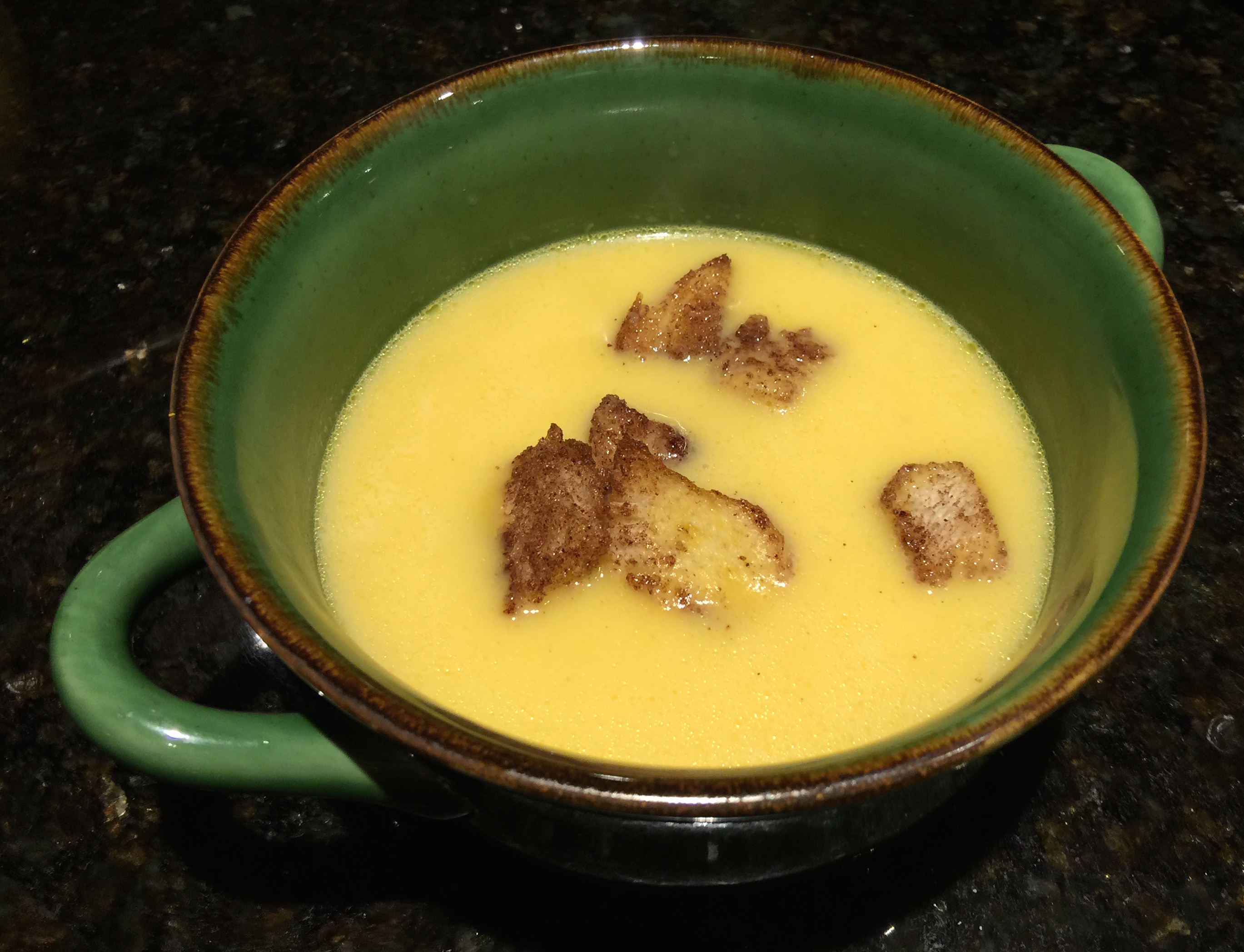
Turn off the heat. Dish out the finished butternut squash soup, sprinkling the cinnamon sugar croutons on top right before it is eaten so they remain crunchy.
The test of any great soup, though, is how it holds the next day. I like soups that you can make and then serve for a few days in a row as a side dish, with the flavor intensifying, becoming more delicious. The butternut squash soup passes on that front. The next day (today) it’s just as good as ever.
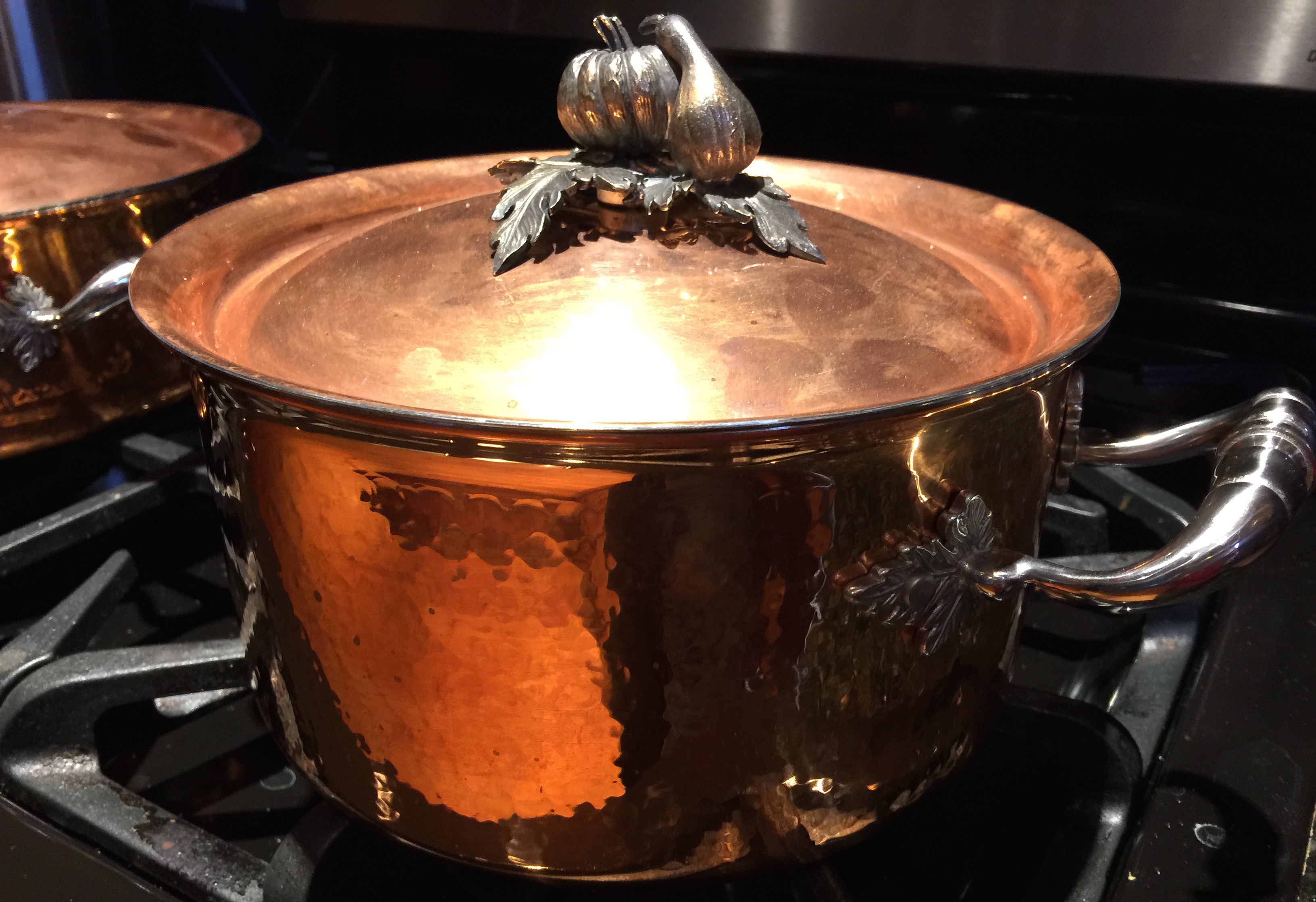
The true test was getting out the pot (I had transferred the leftovers to a smaller pot so it would more easily fit in the refrigerator) and reheating the soup the next day.
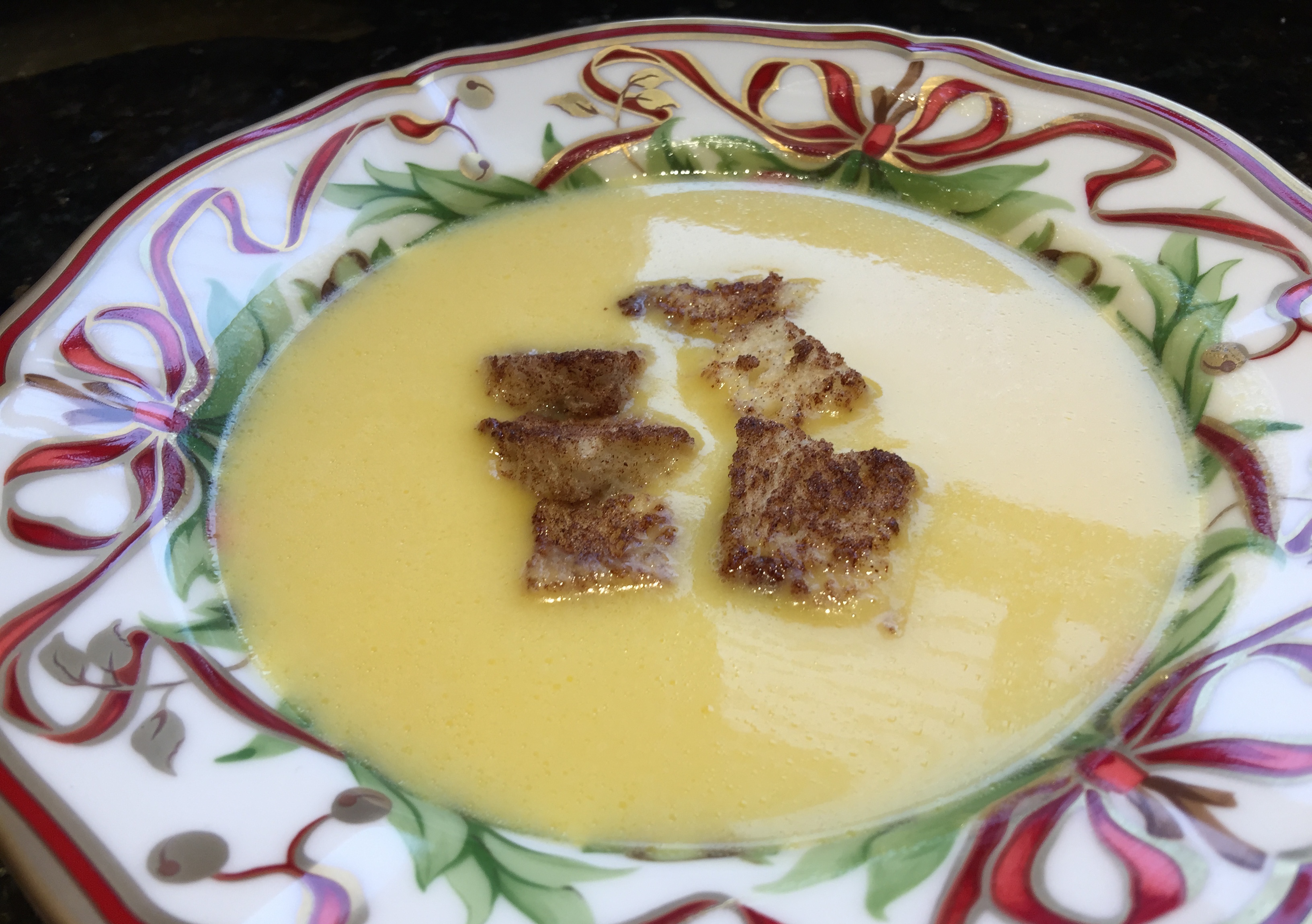
Victory! It was as good, if not a little better, than the day it was made. That’s what you want in a great soup.
Here’s the kicker … excluding the cinnamon sugar croutons, which are going to vary depending upon how many you decide to put into your soup bowl, the actual soup itself contained only 1,282 calories for the entire pot. All of that butter, heavy cream, and even a touch of brown sugar was used so judiciously in a base made up of water and squash, it manages to be rich and filling at a very low nutritional sacrifice. Just as beautifully, the entire thing cost less than $10 in ingredients, and that is assuming you pay full retail and don’t get a deal anywhere. That’s going to put your per serving cost between $1.67 and $2.50 per person as the recipe yields enough for 4-6 servings. If you’re a smart shopper, and wait for seasonal deals on butternut squash, you could probably get that price cut in half to save even more money.



